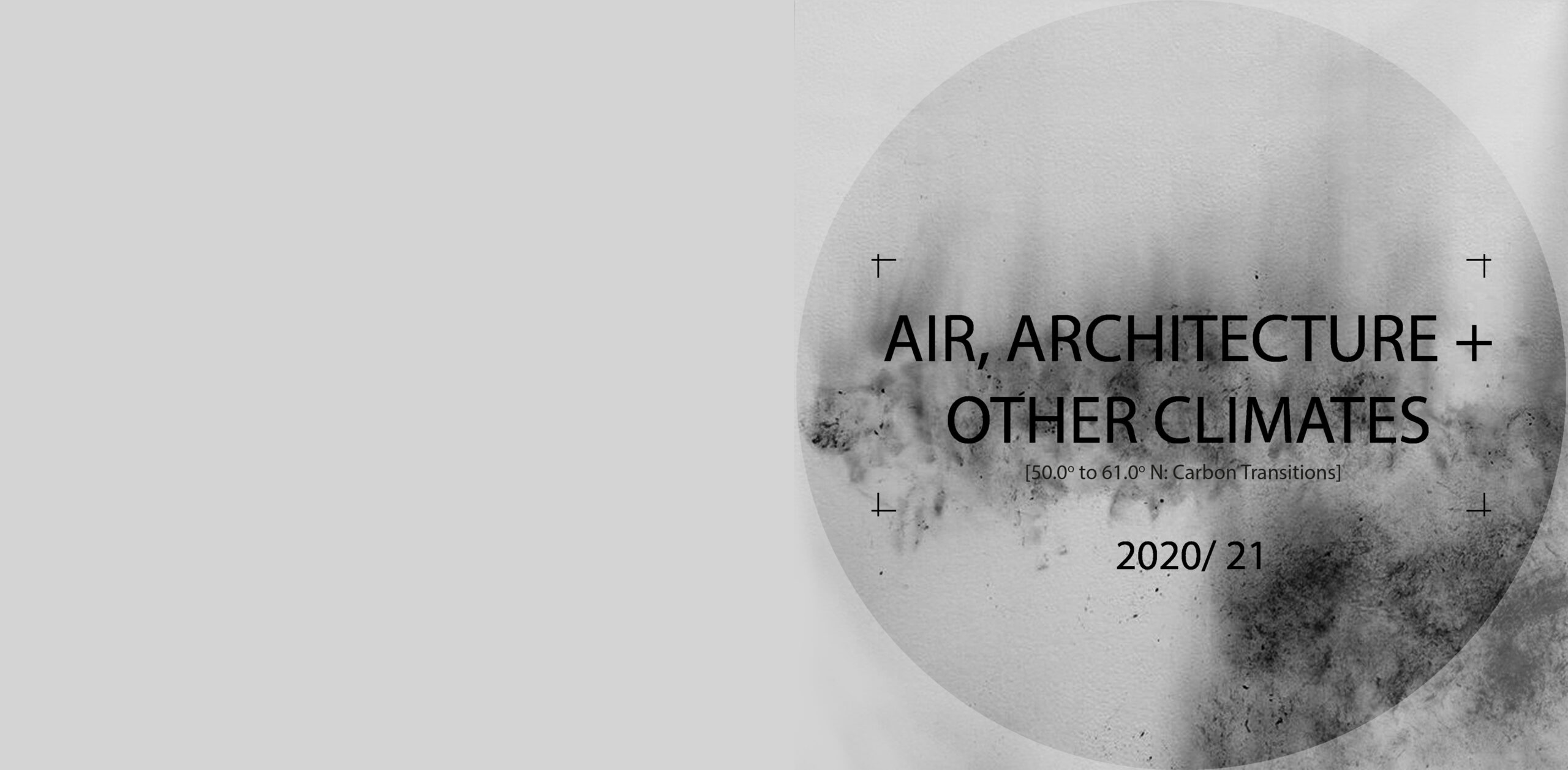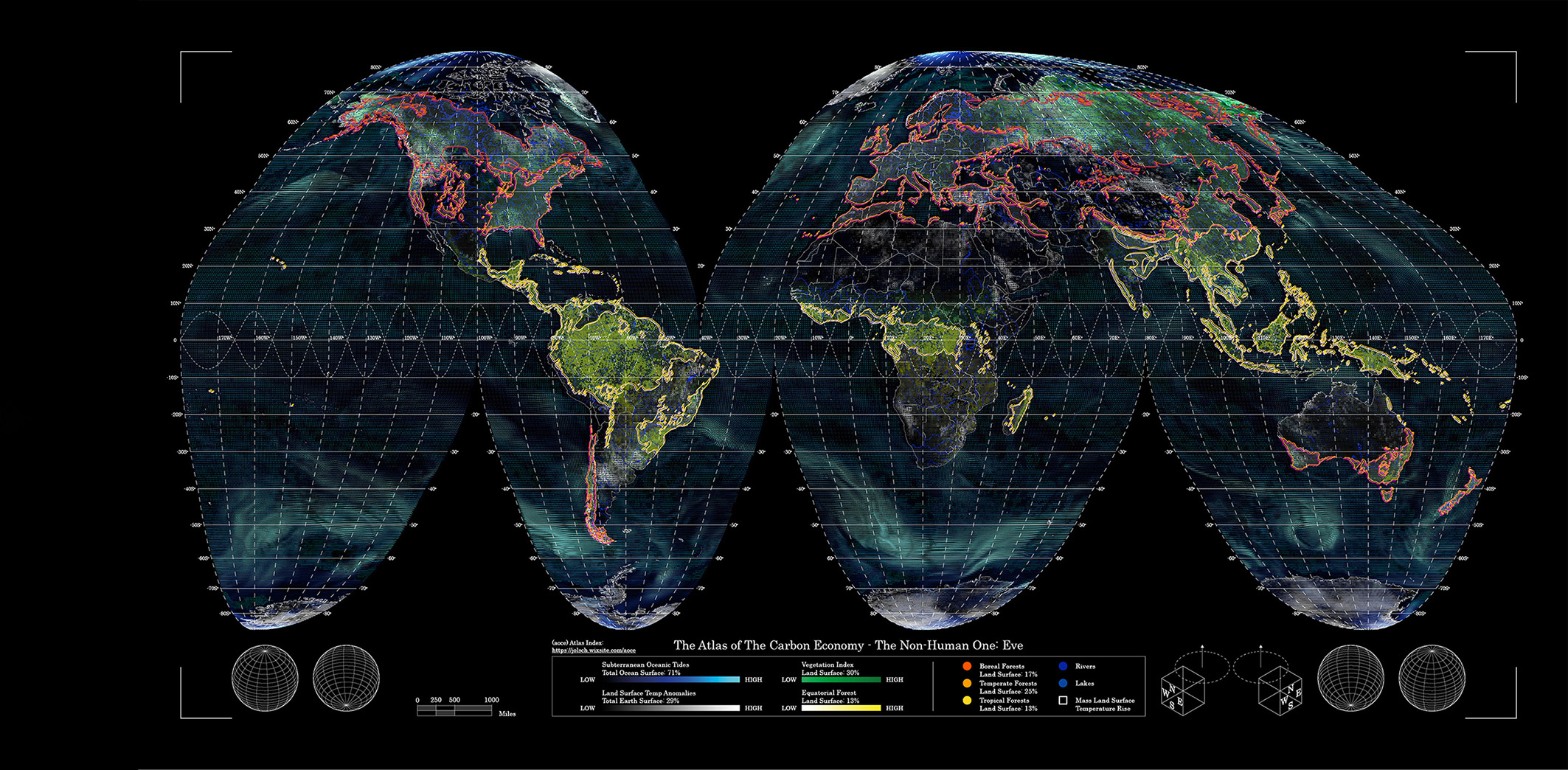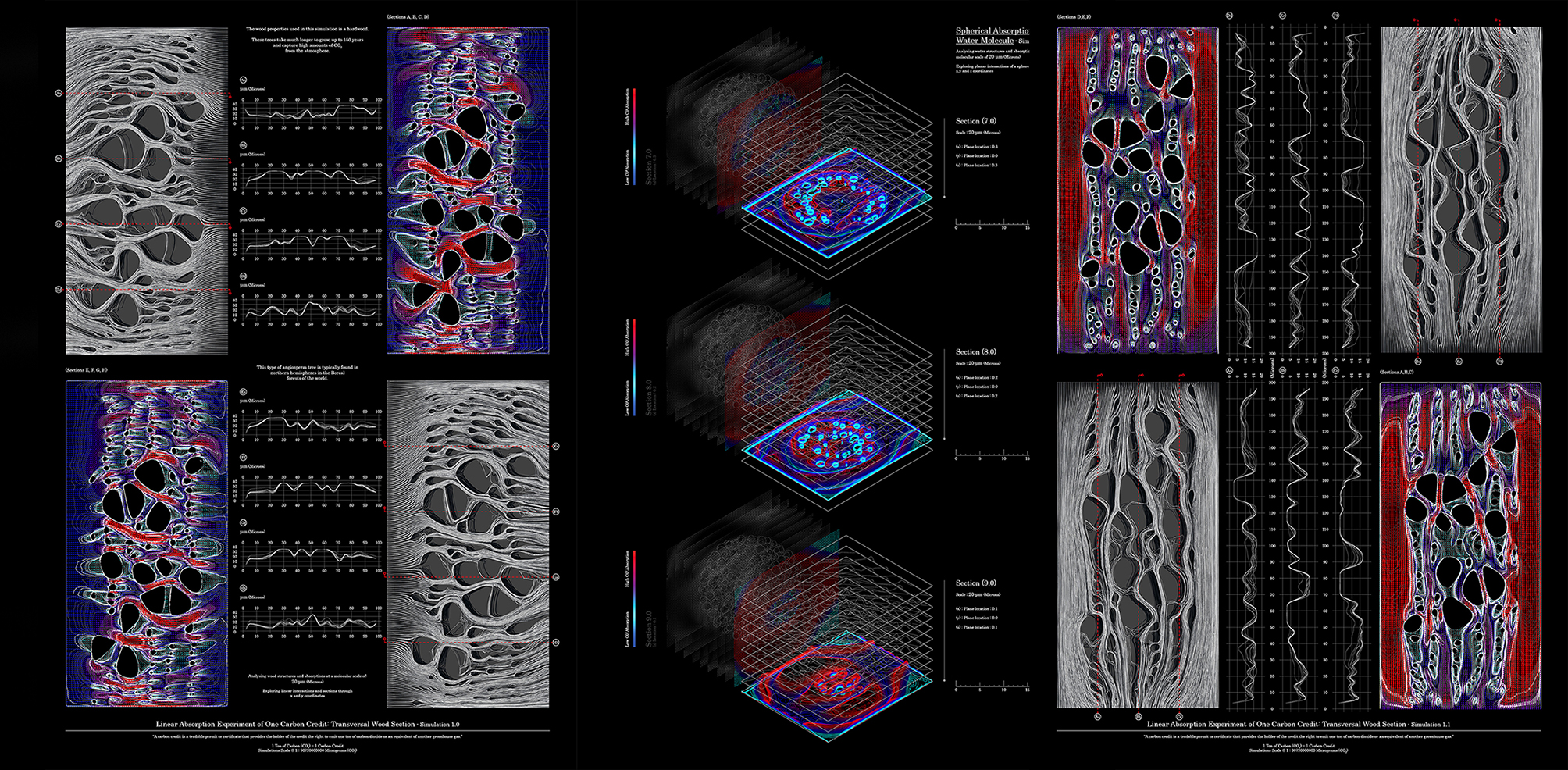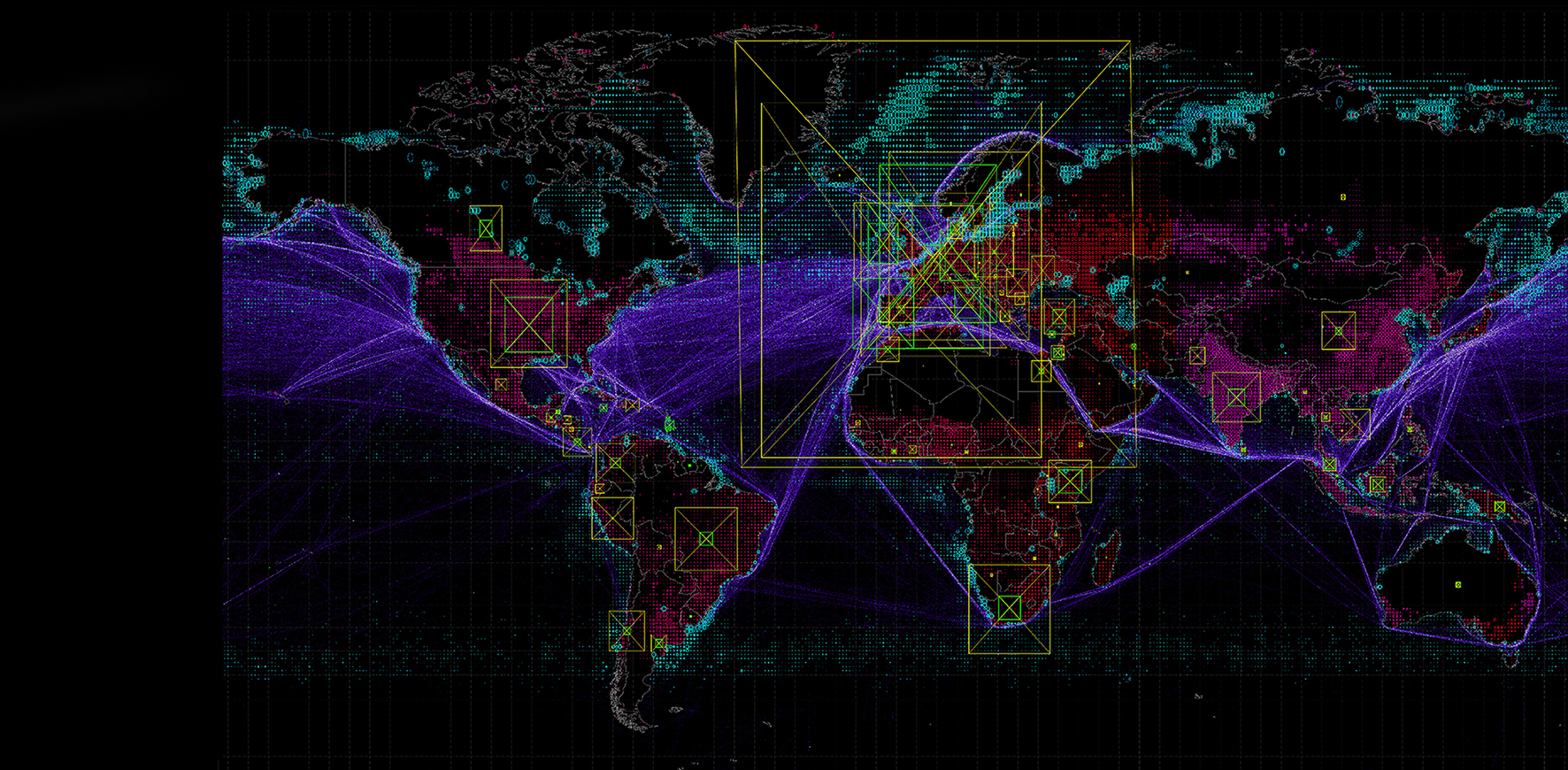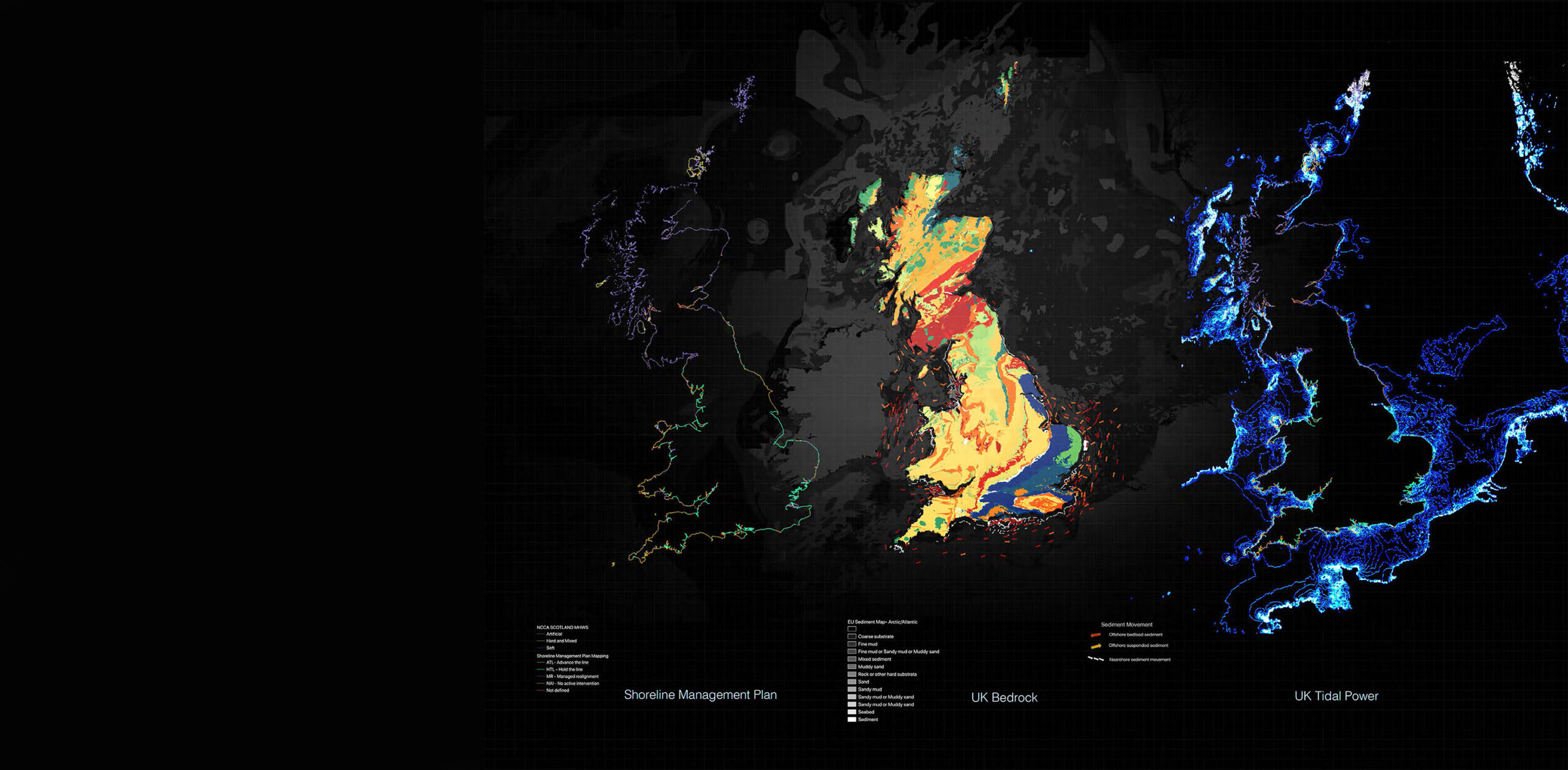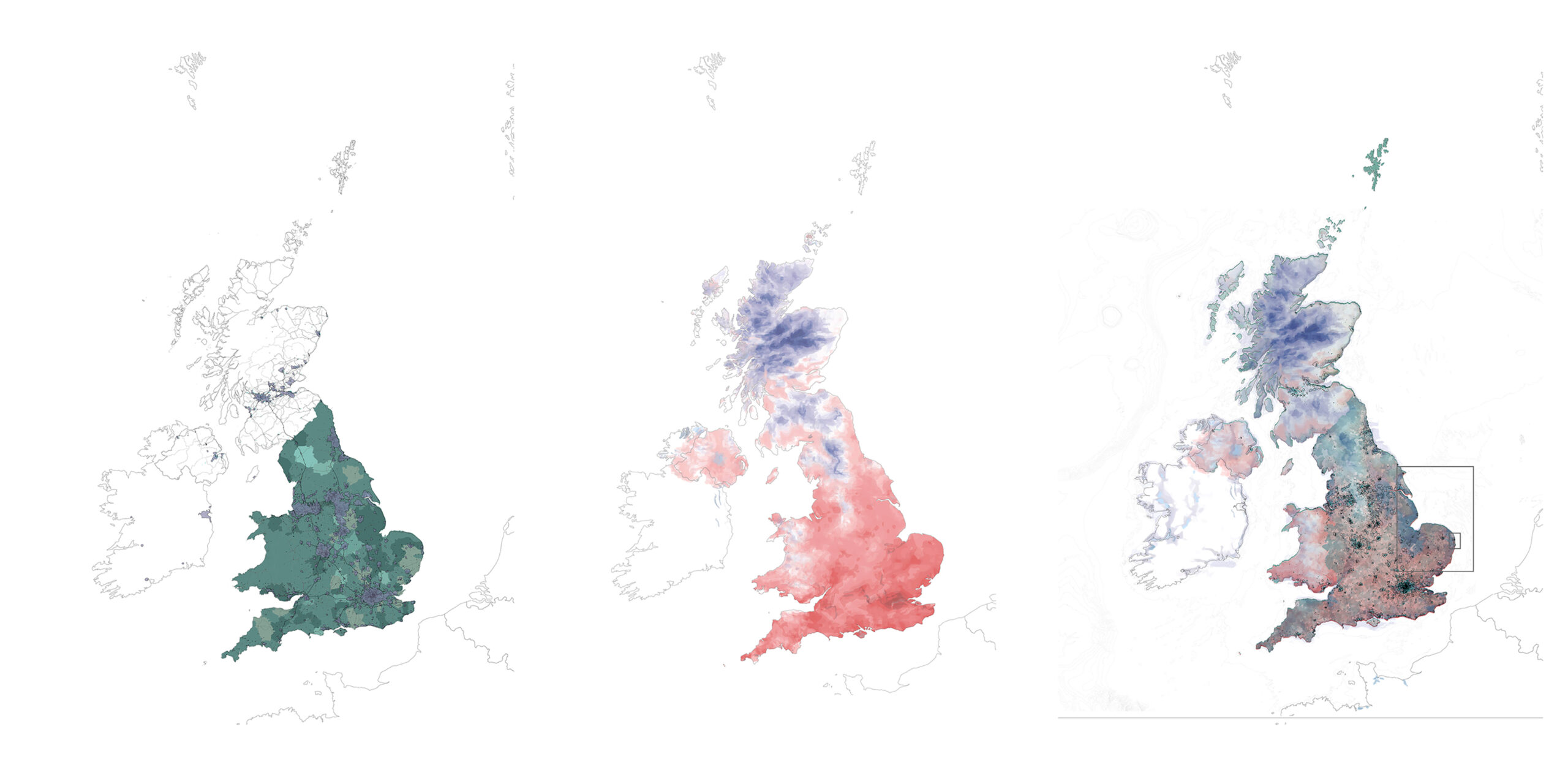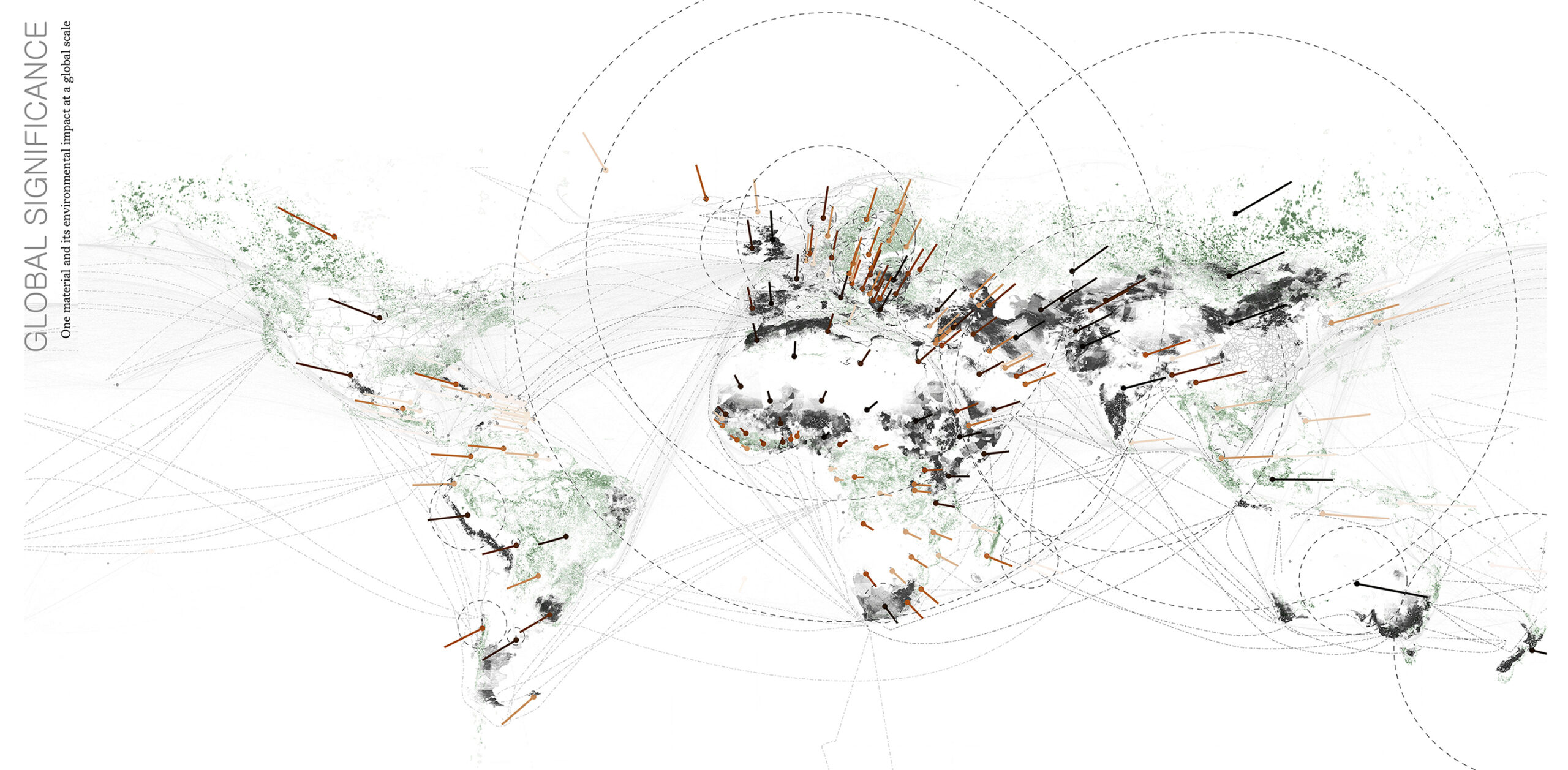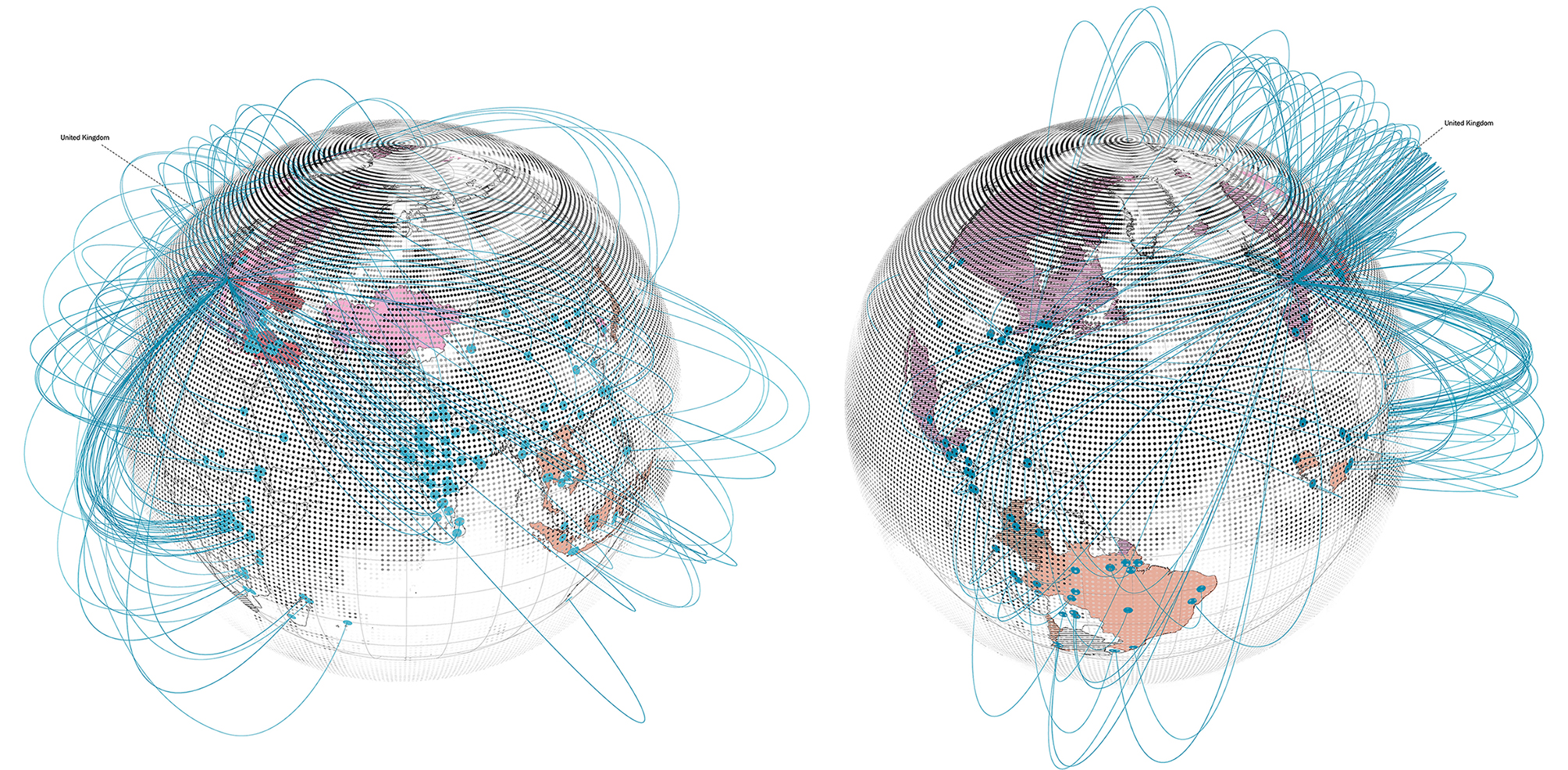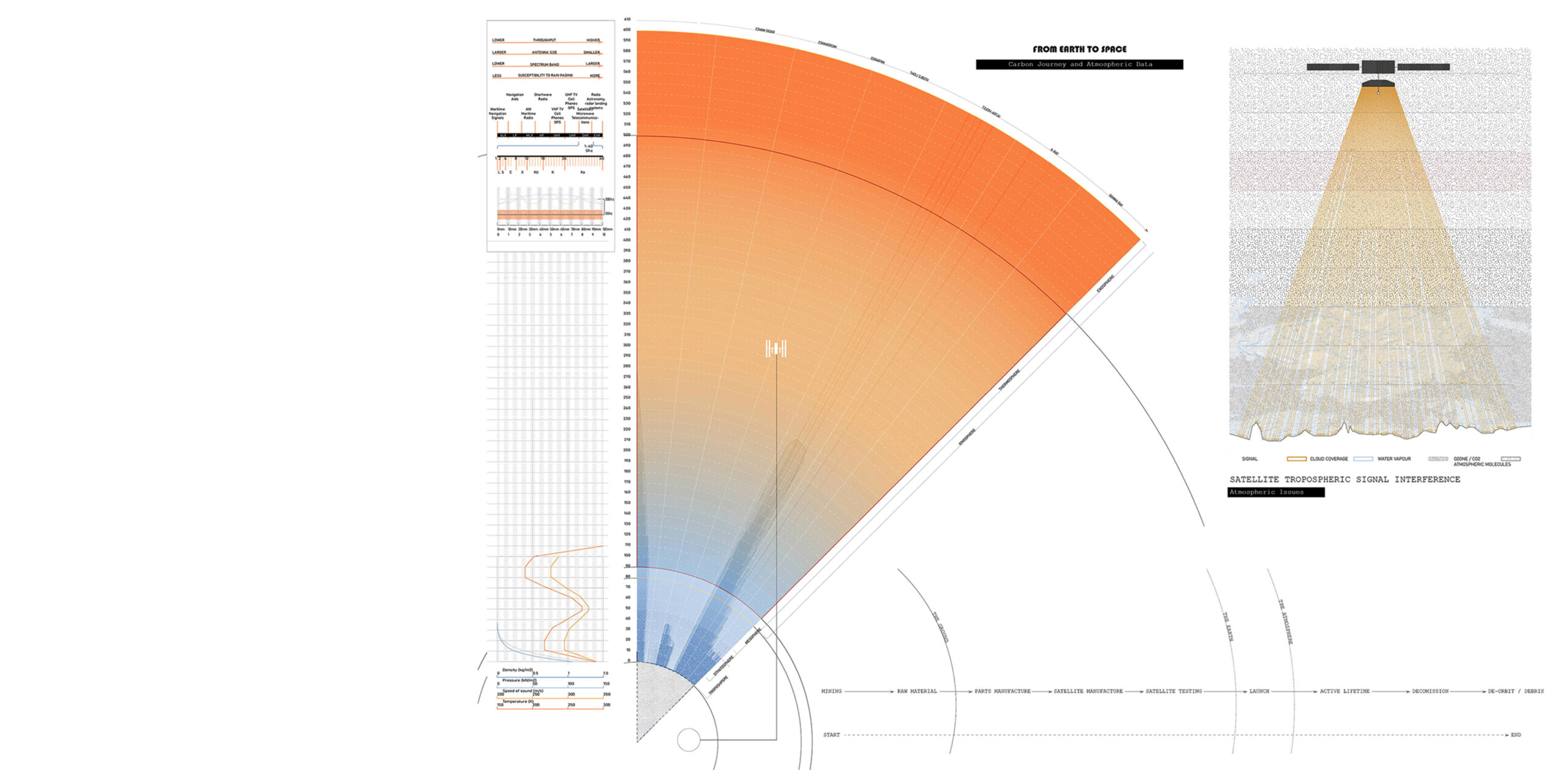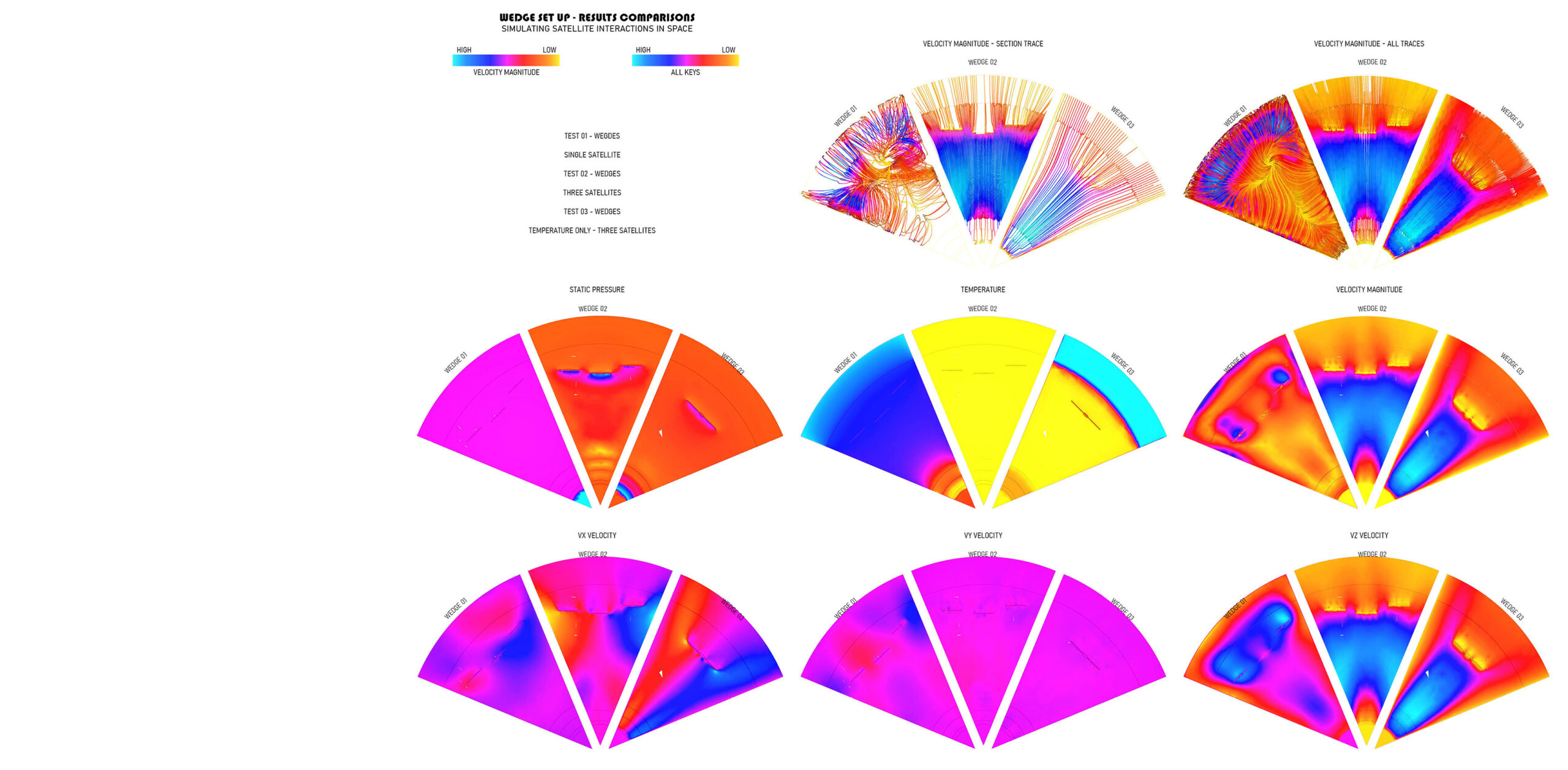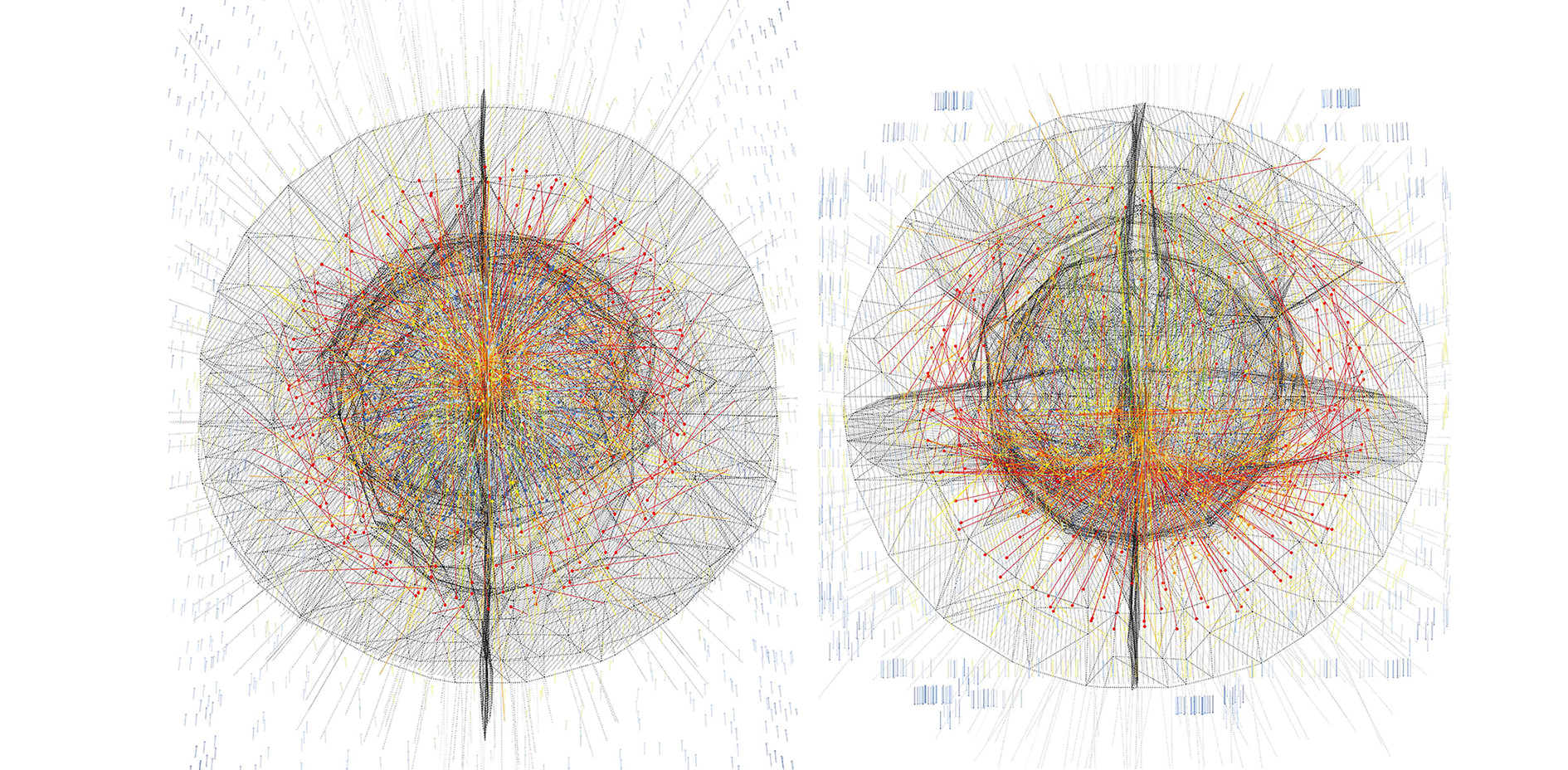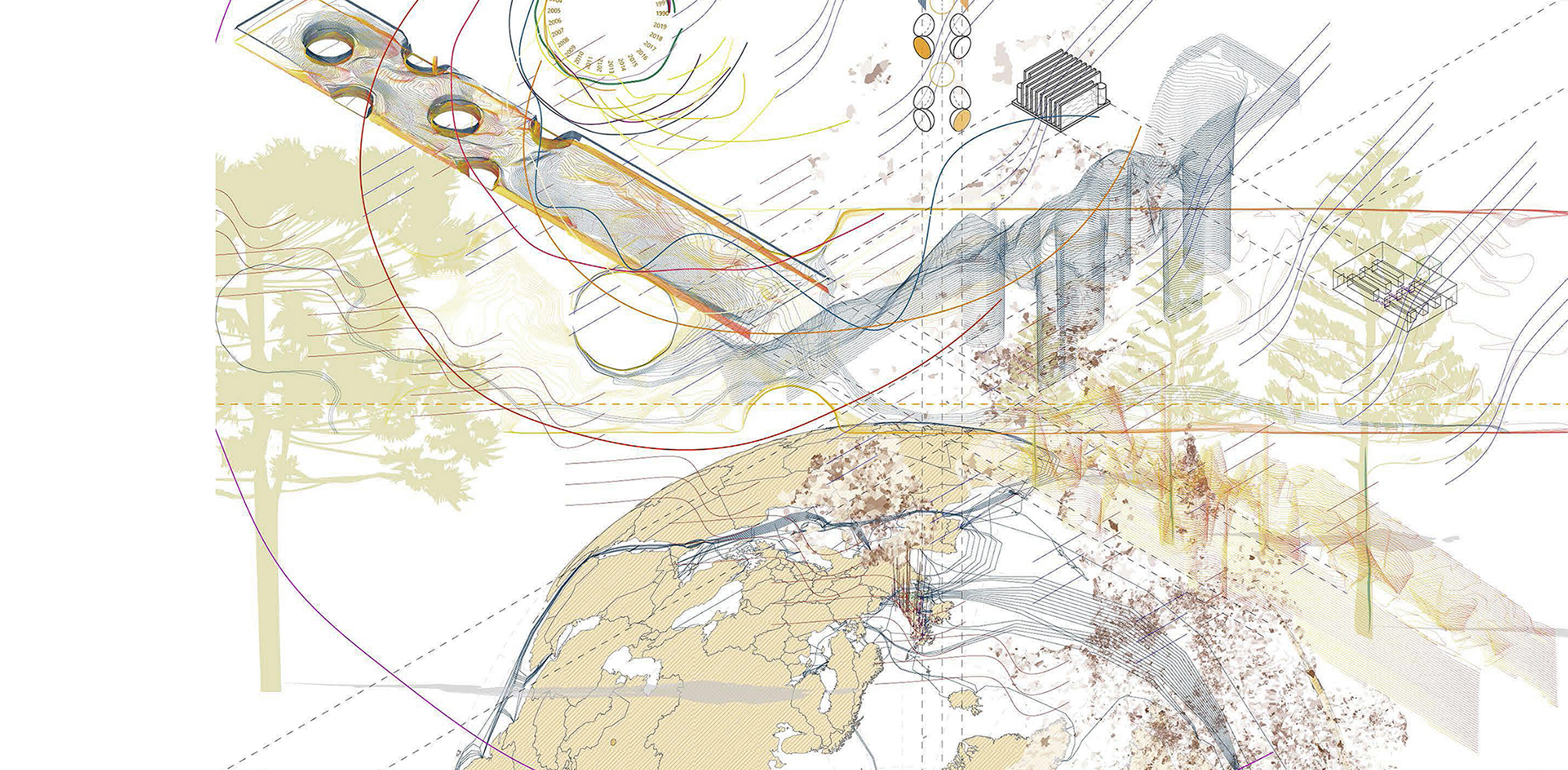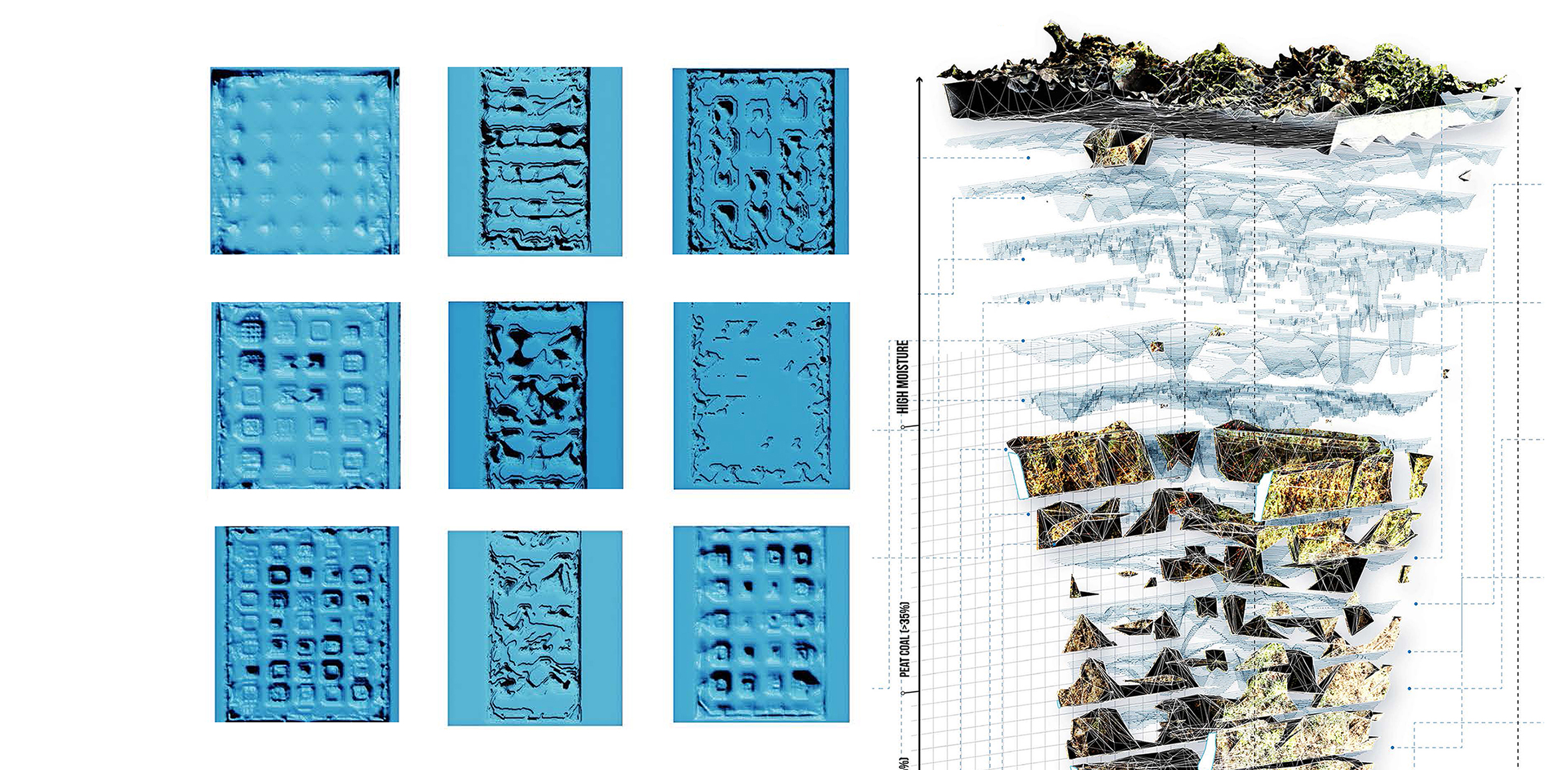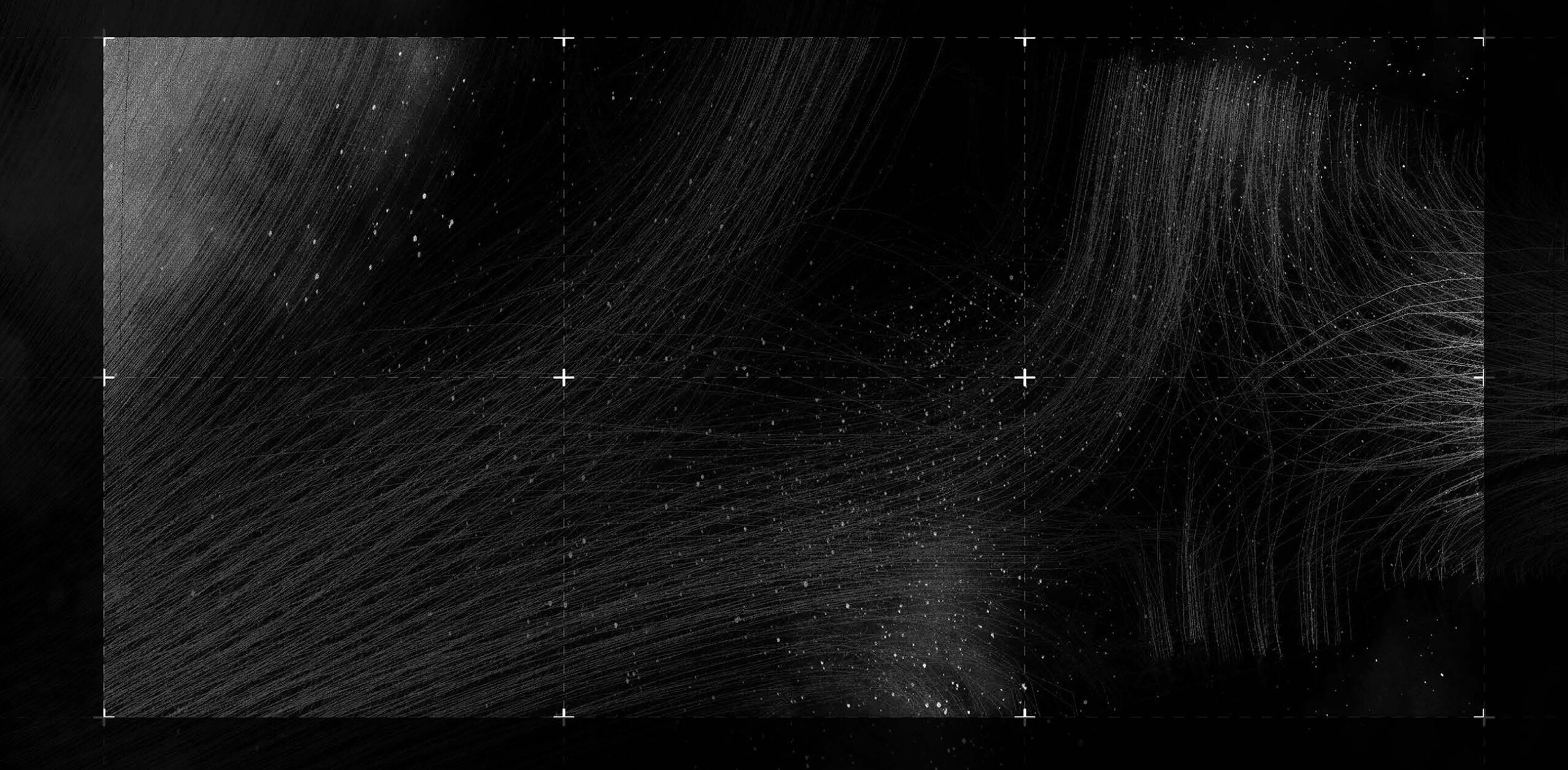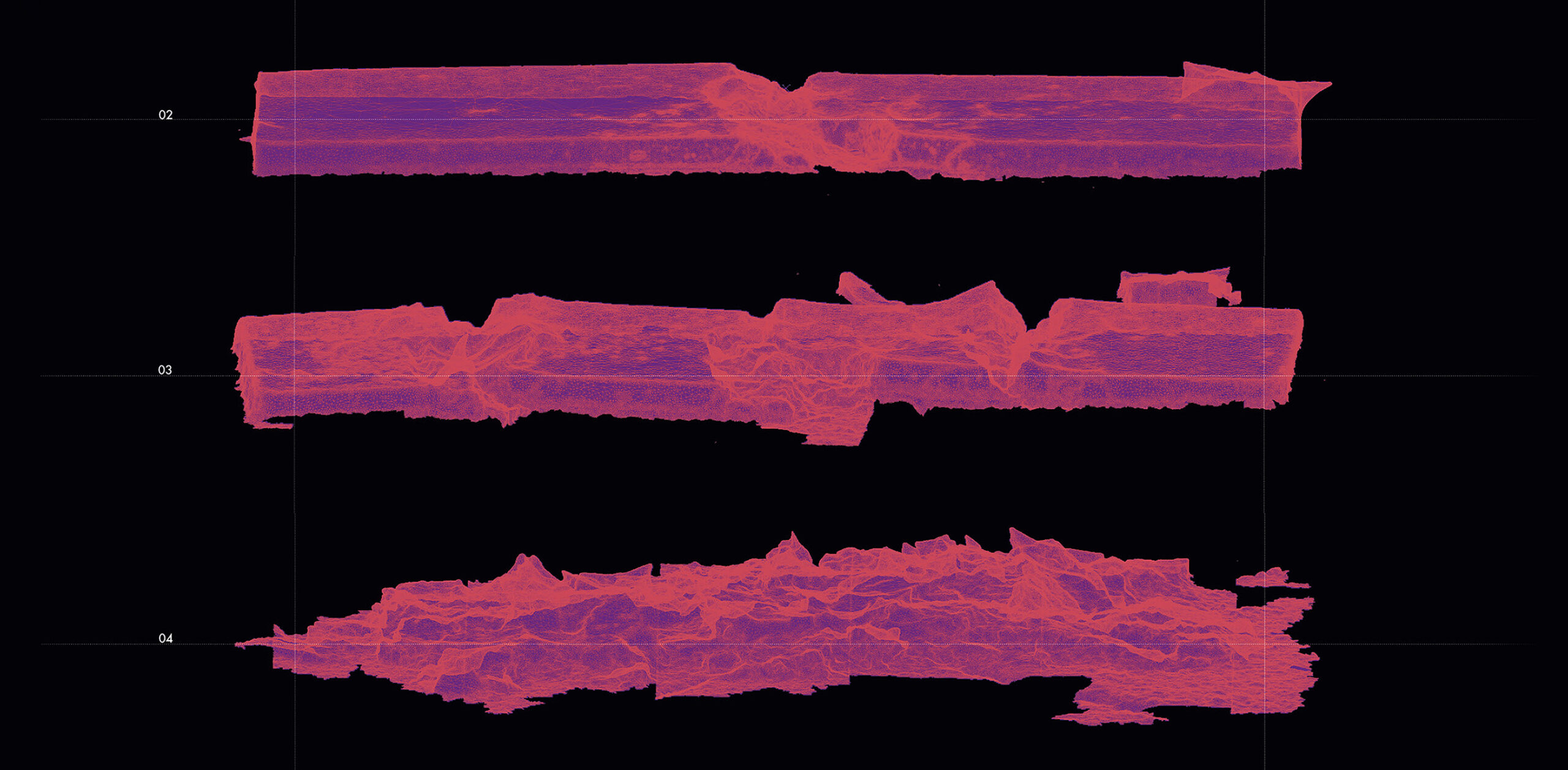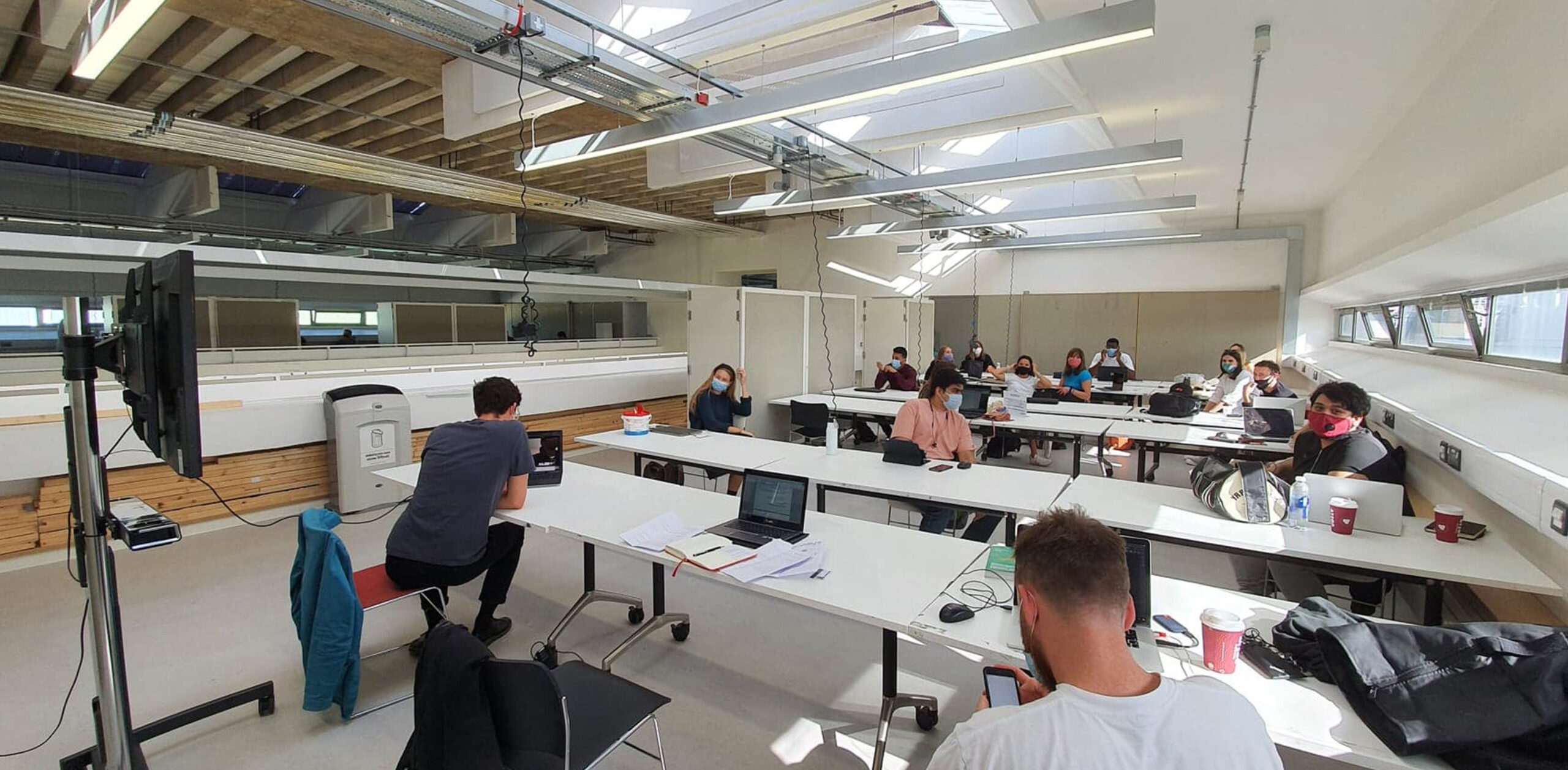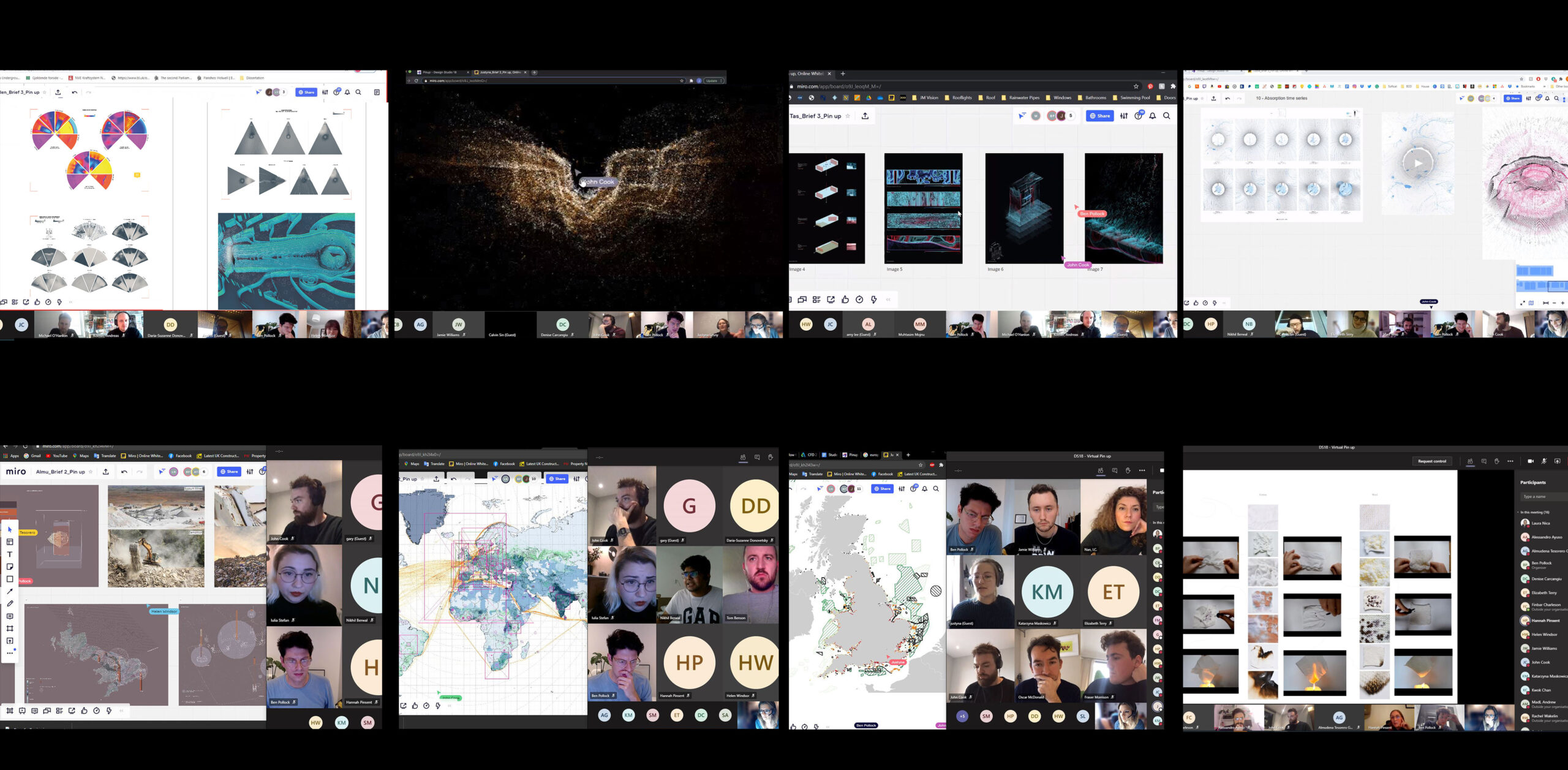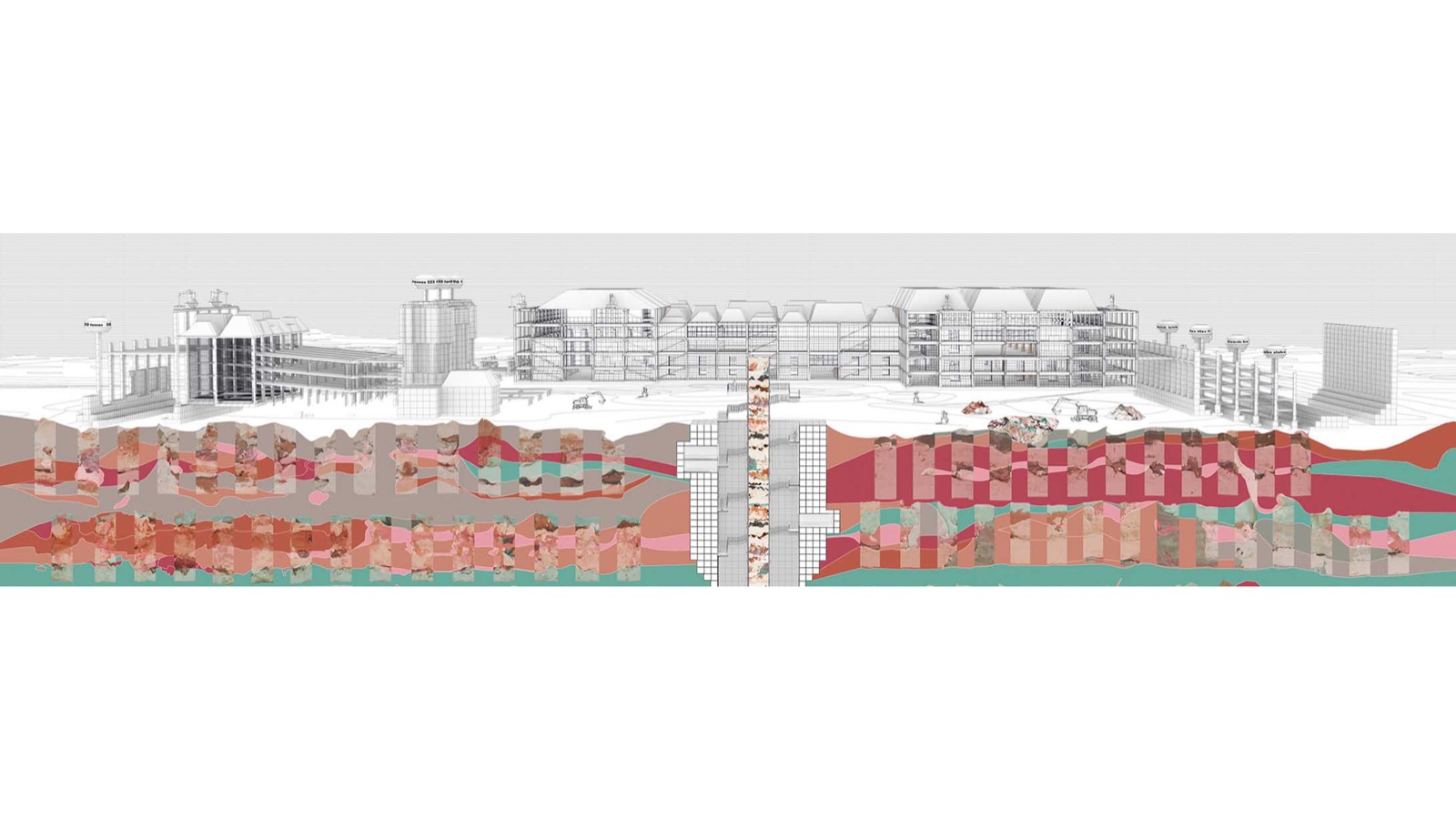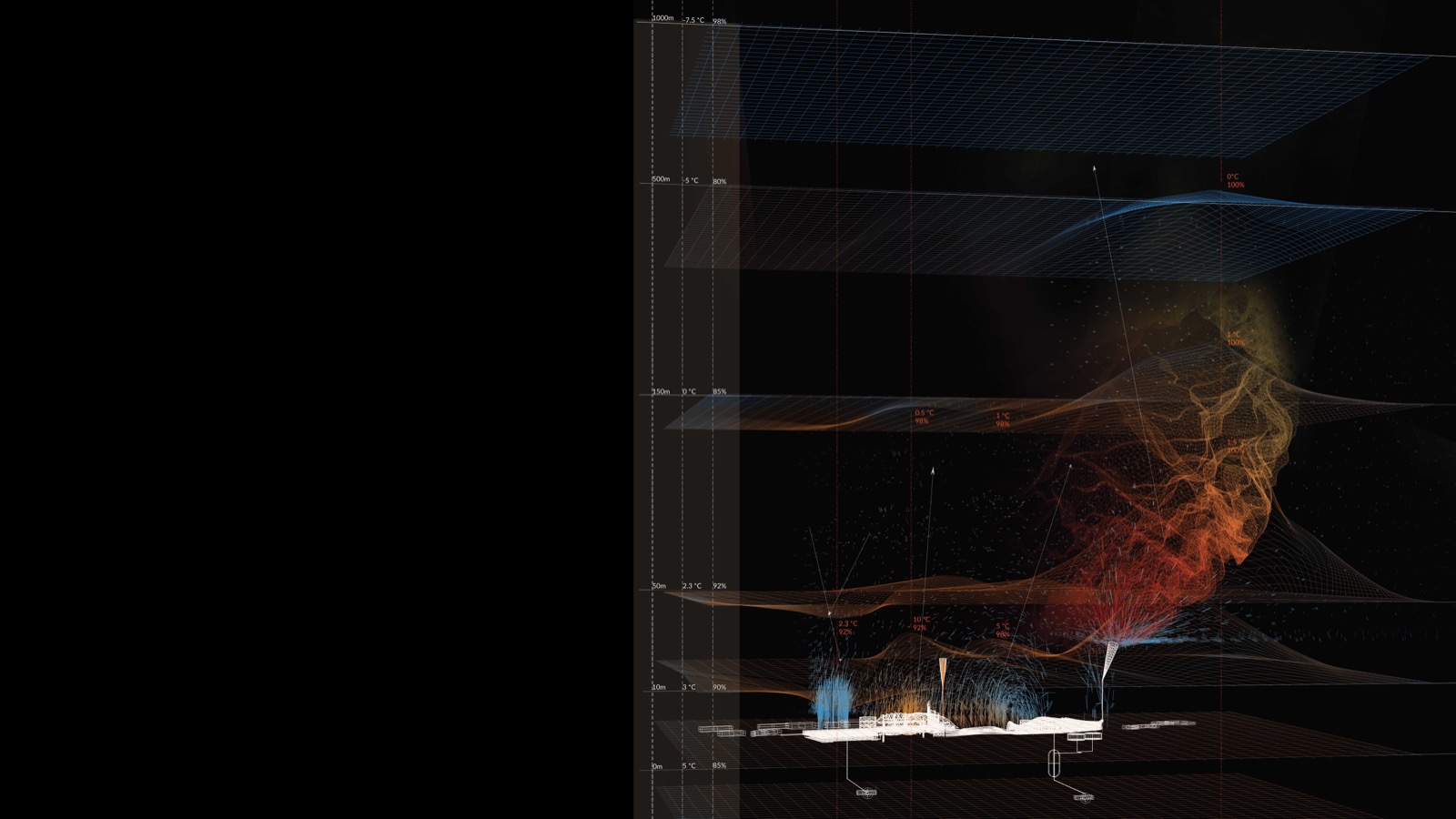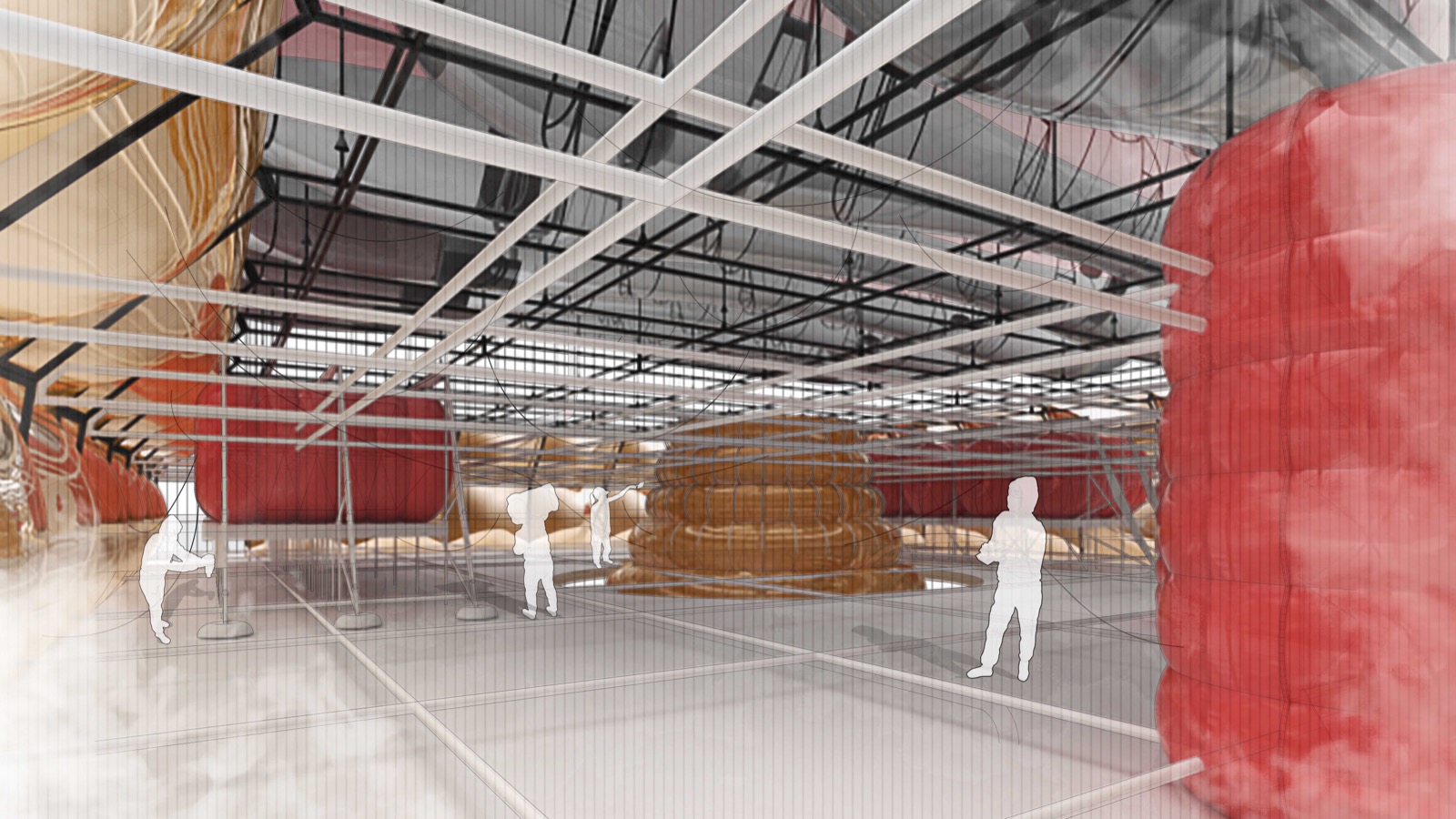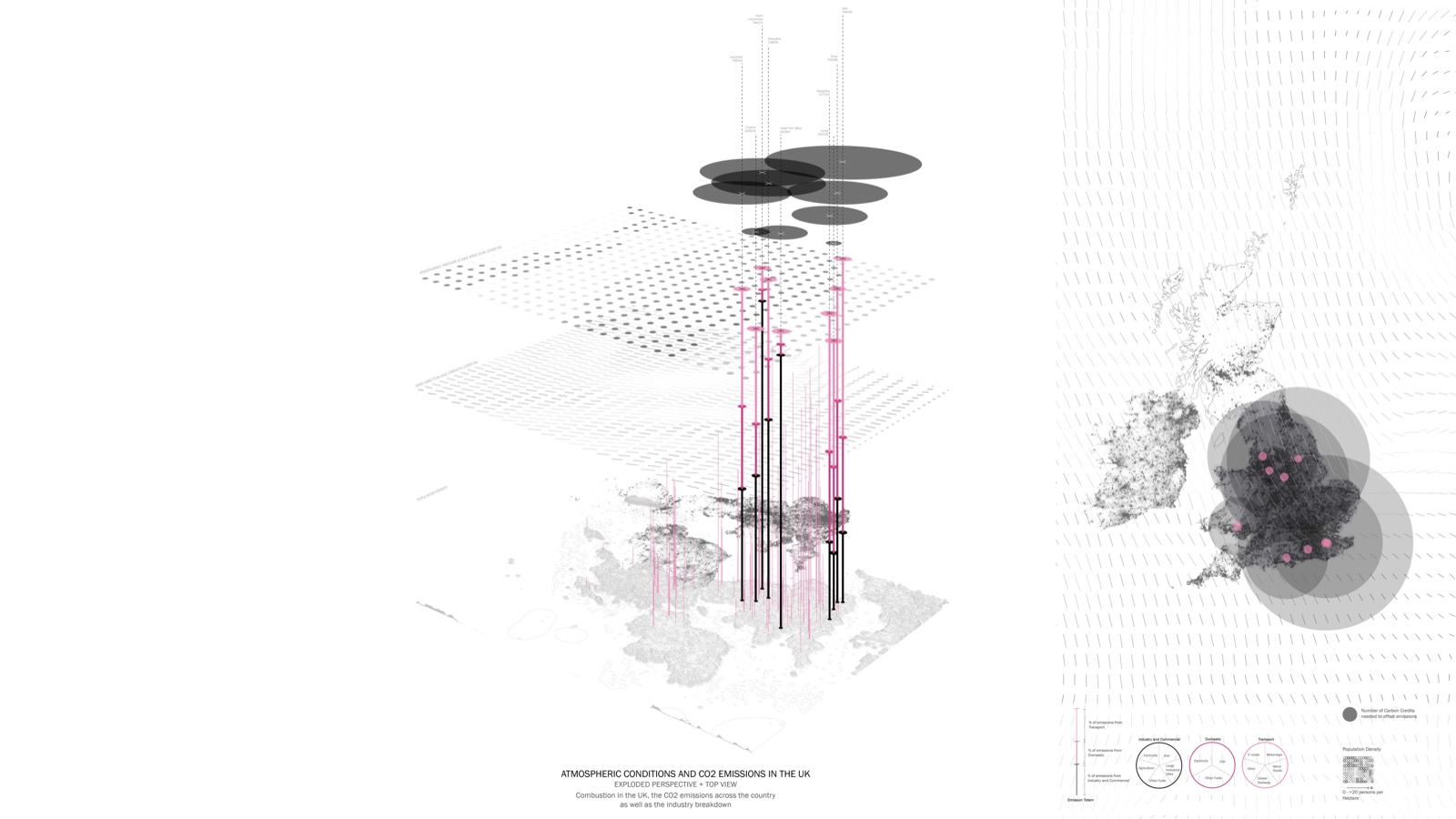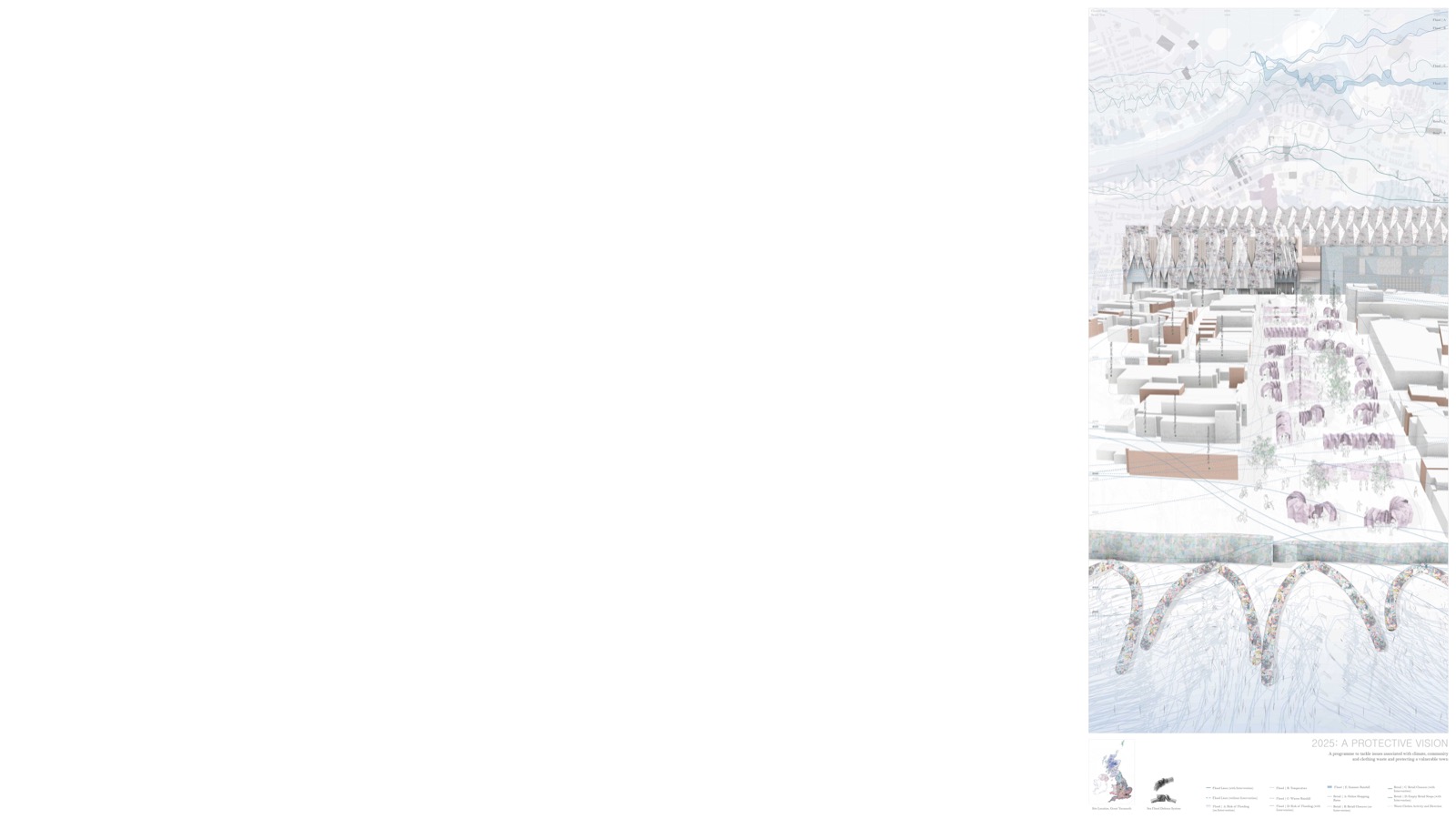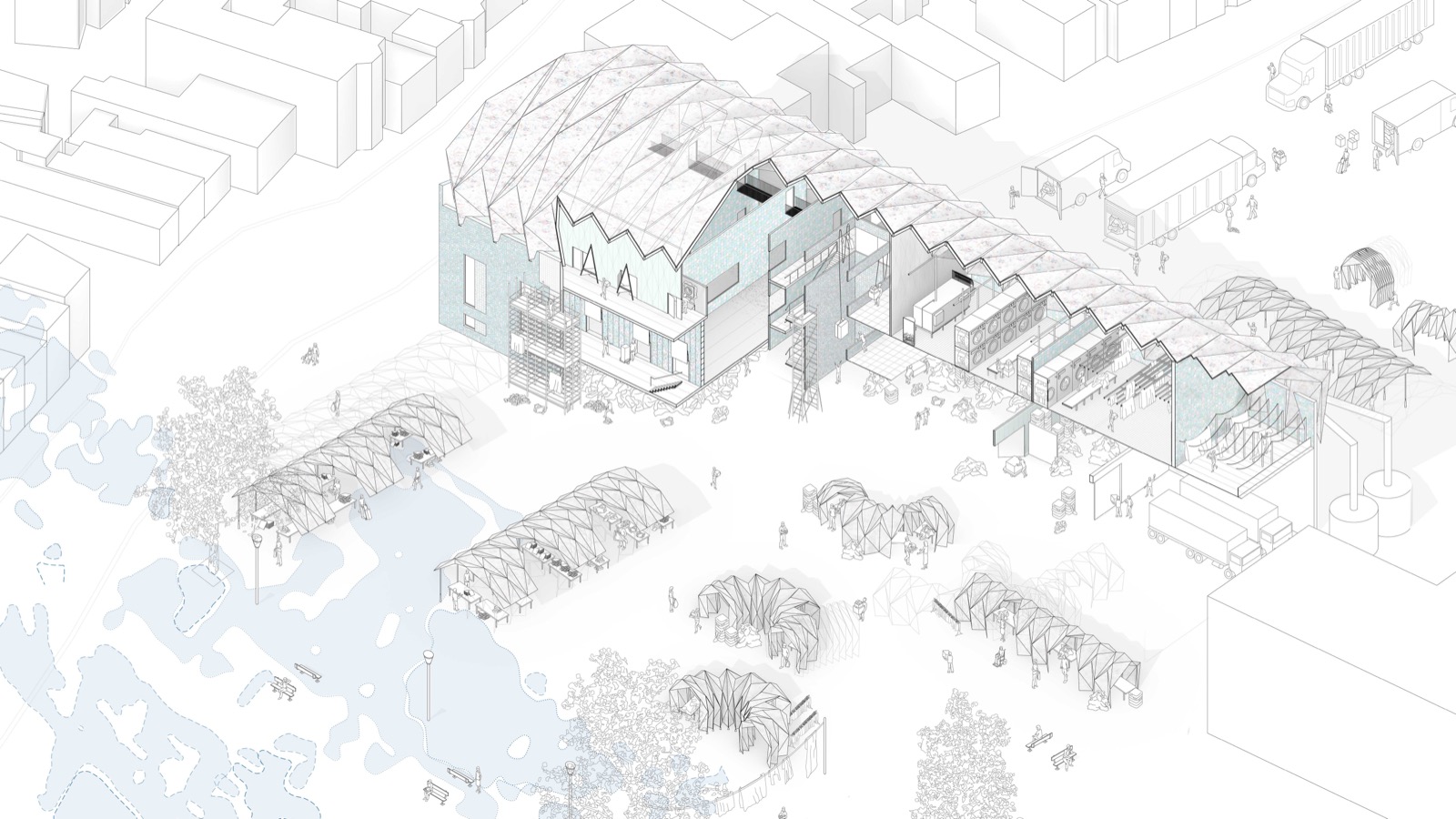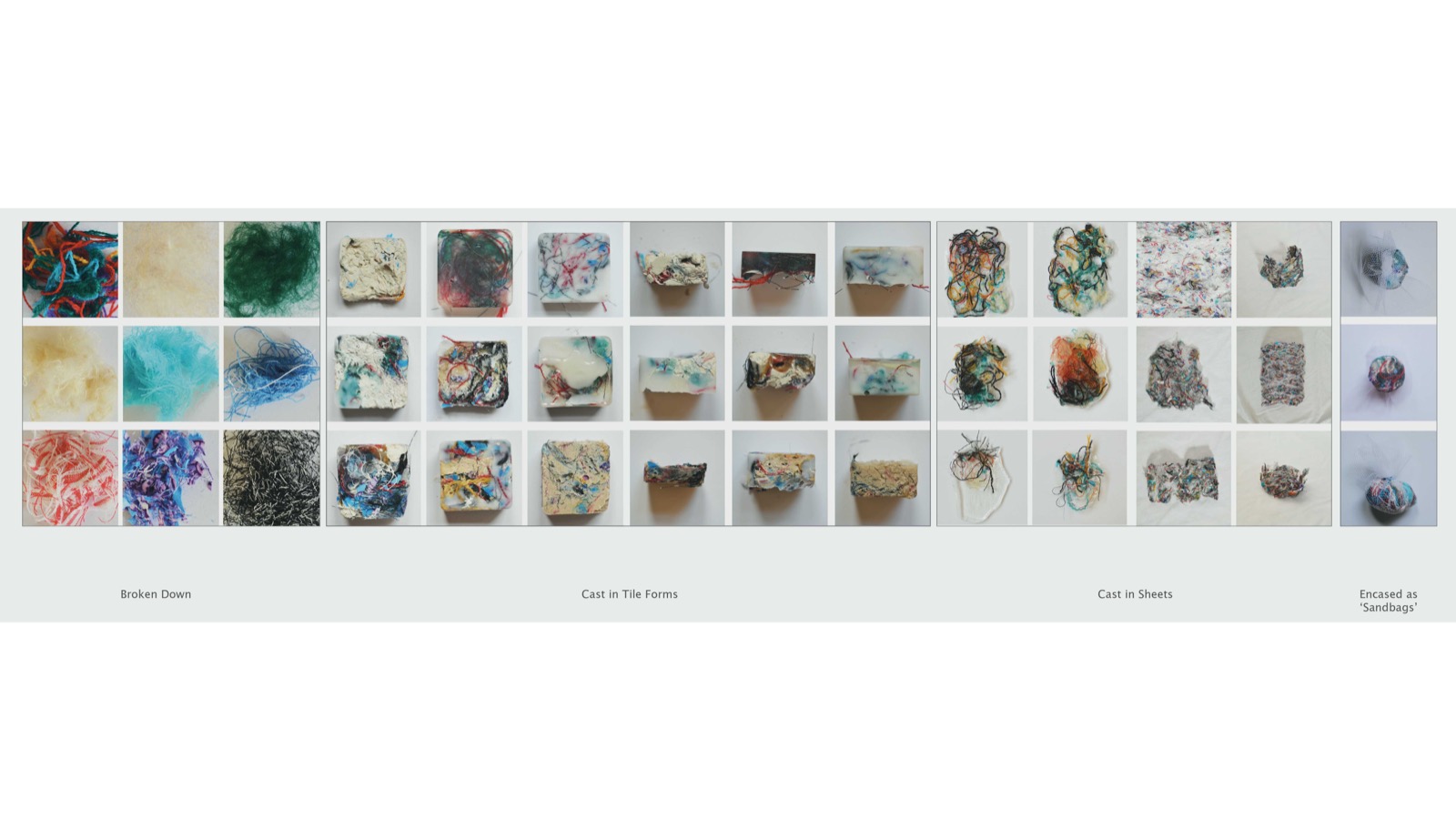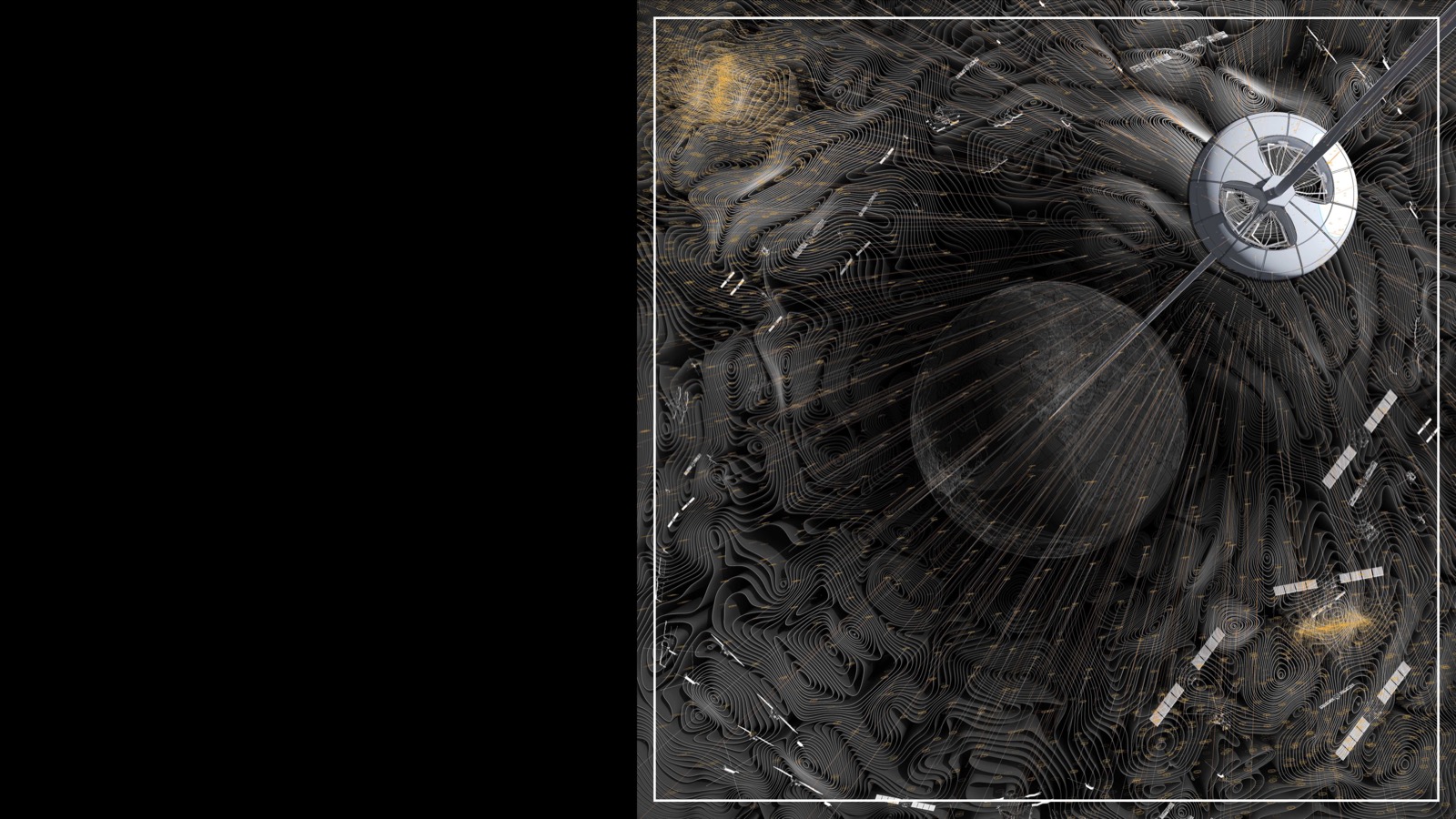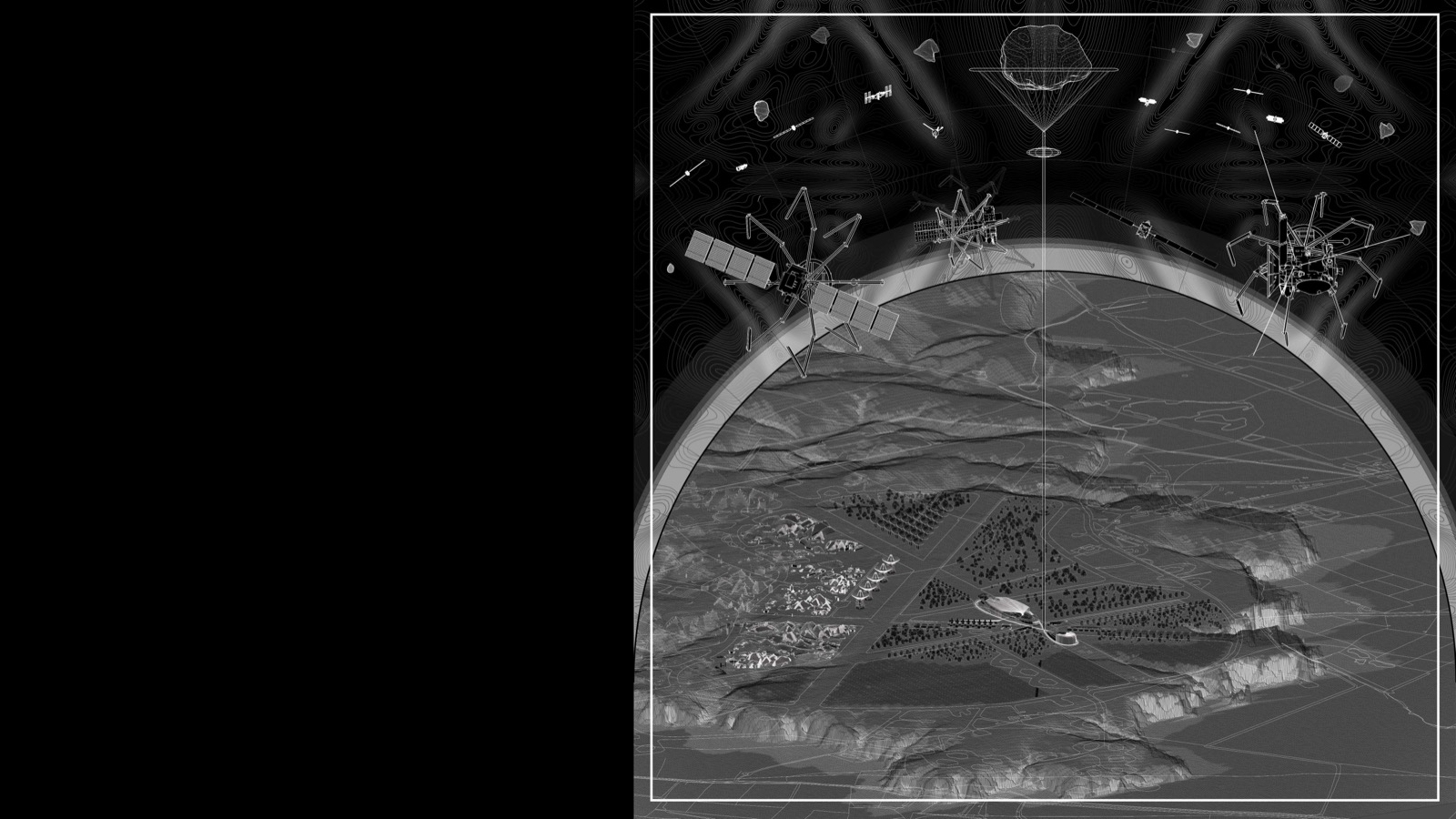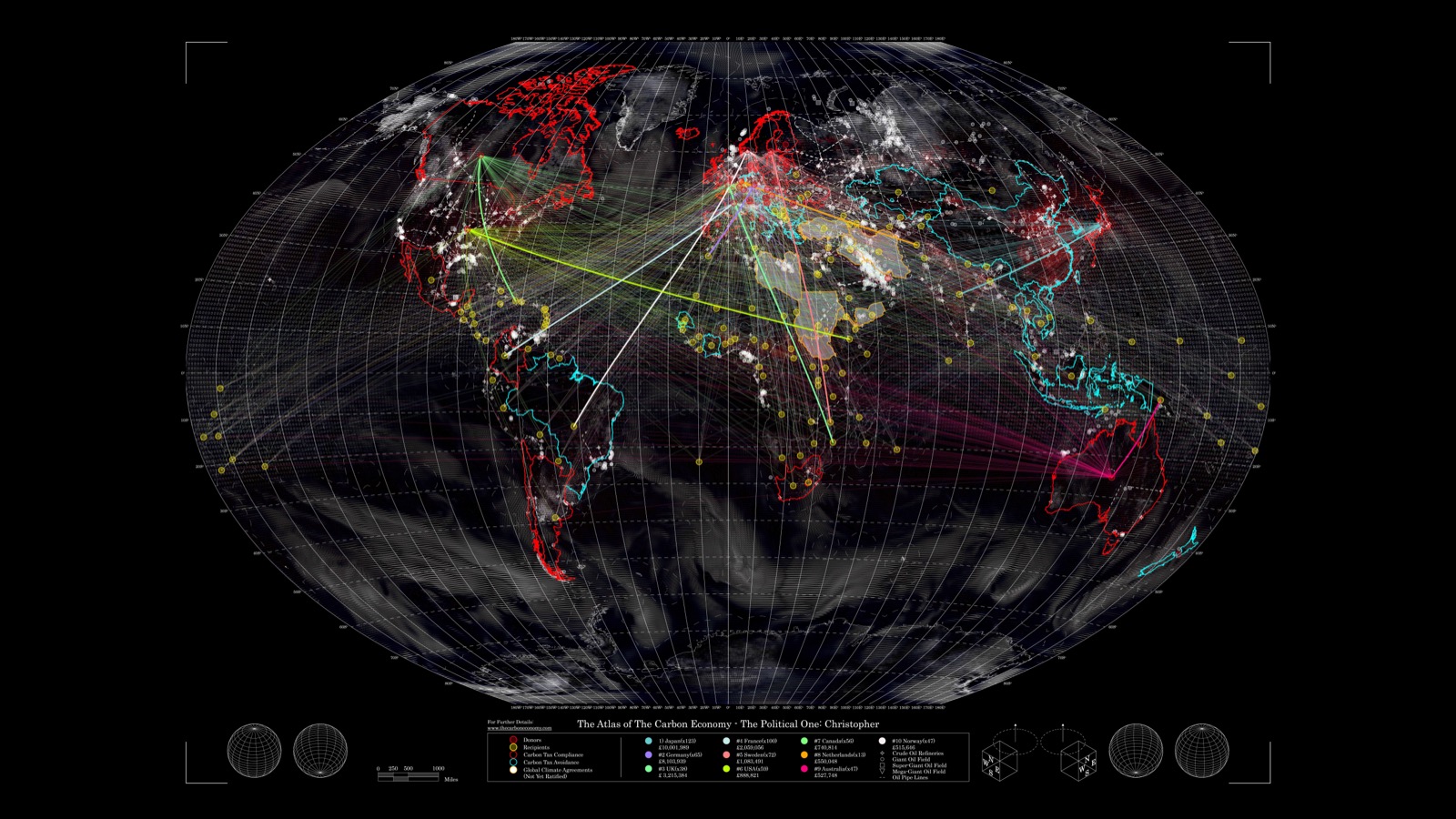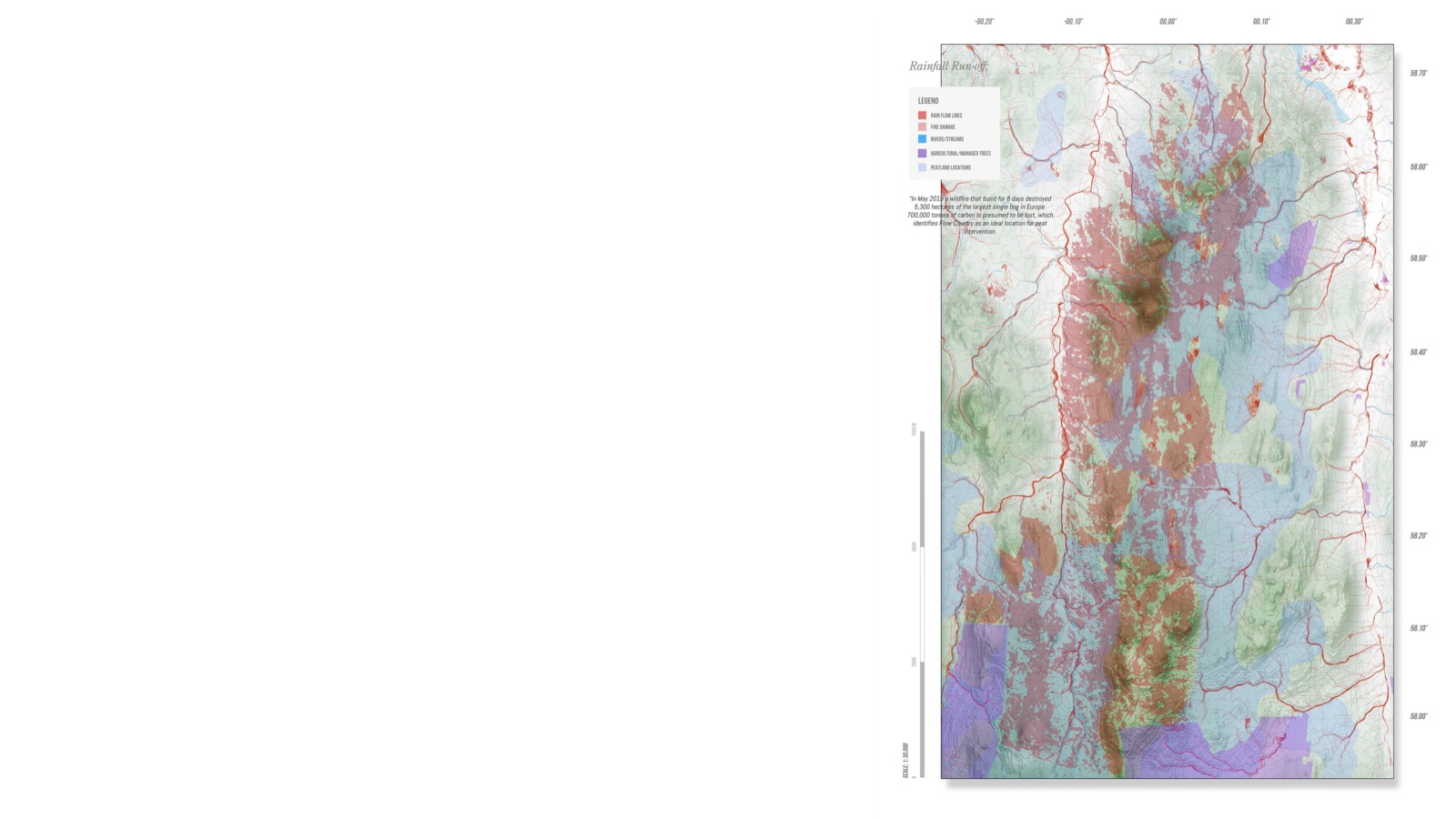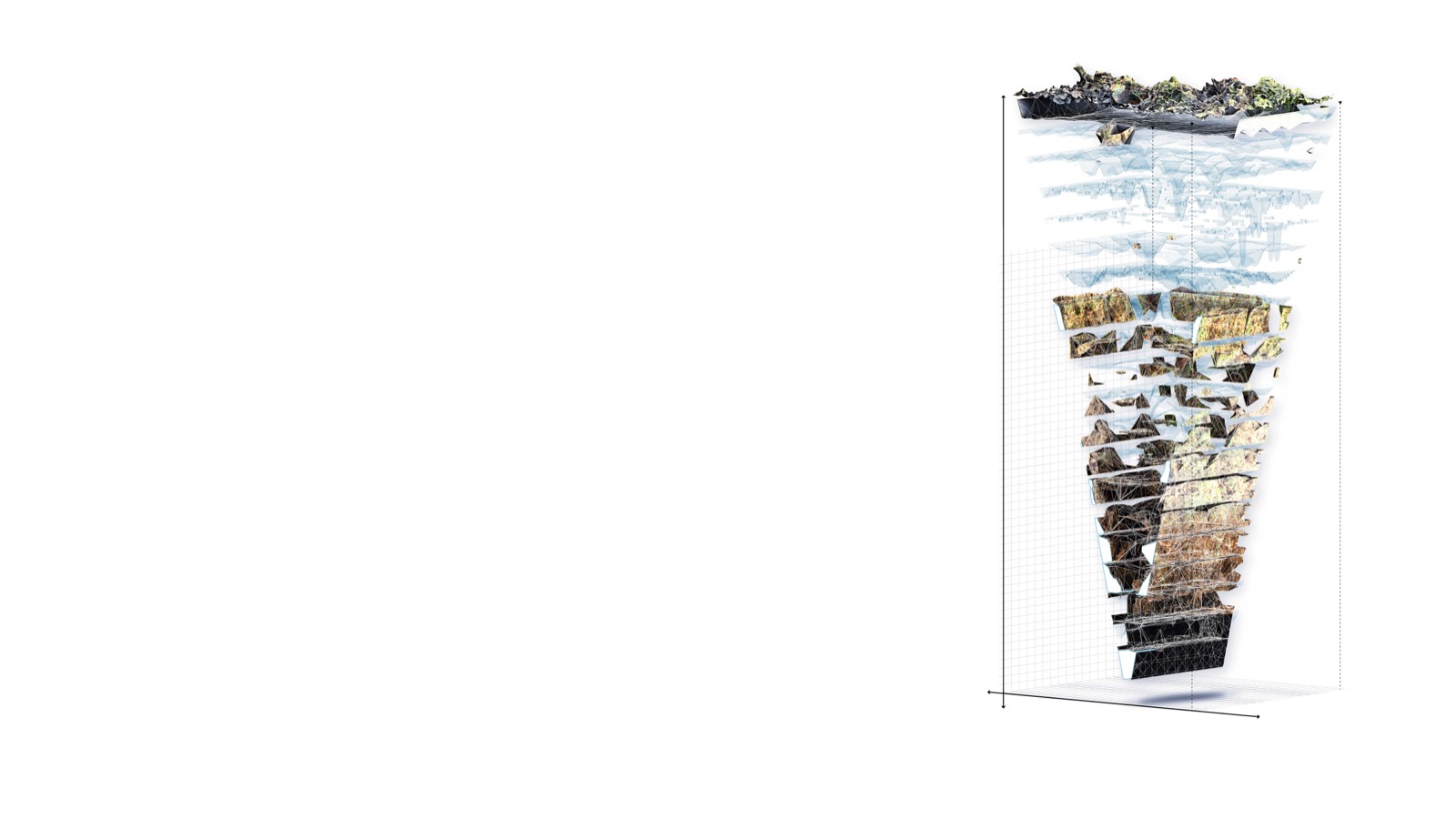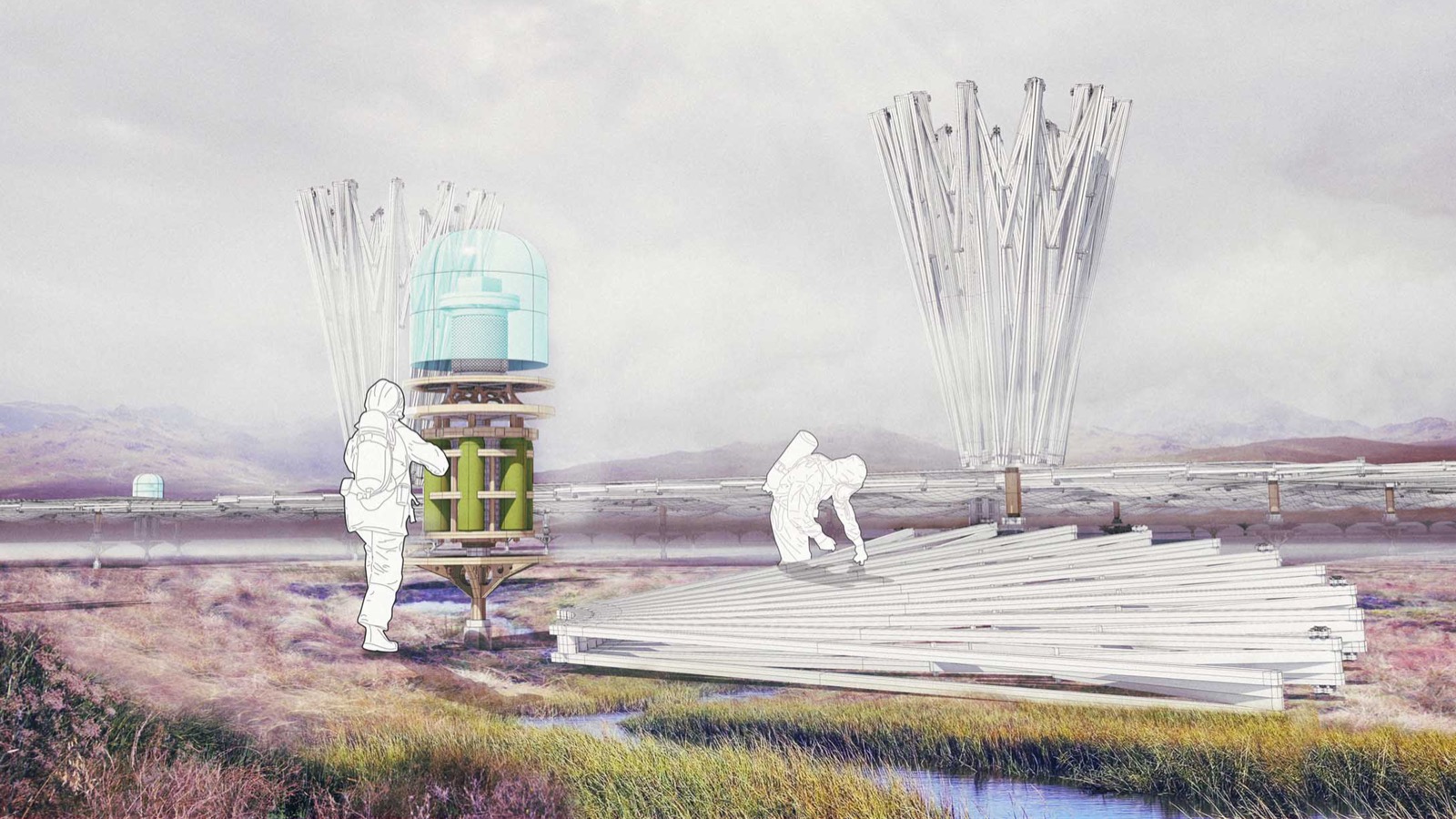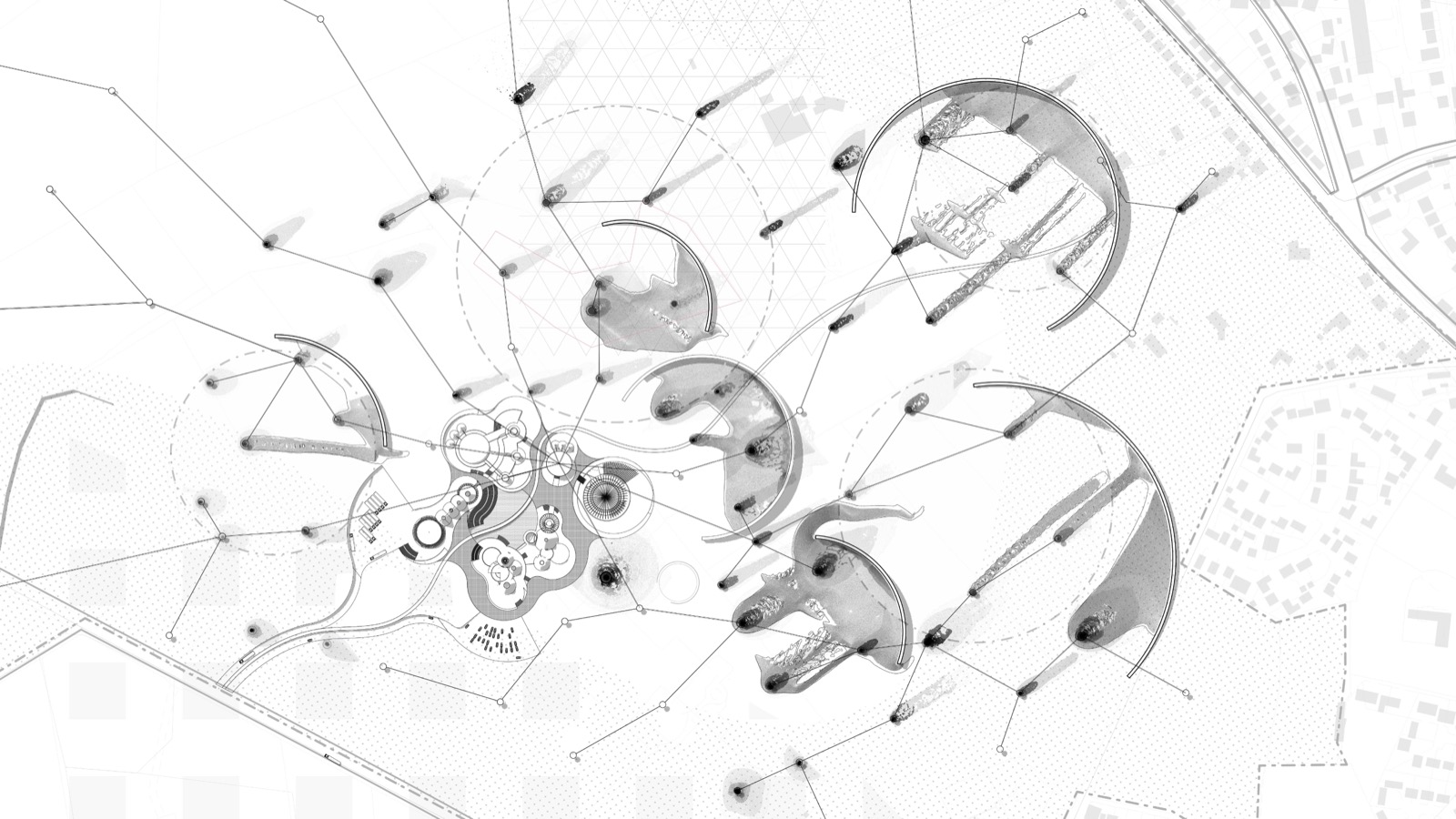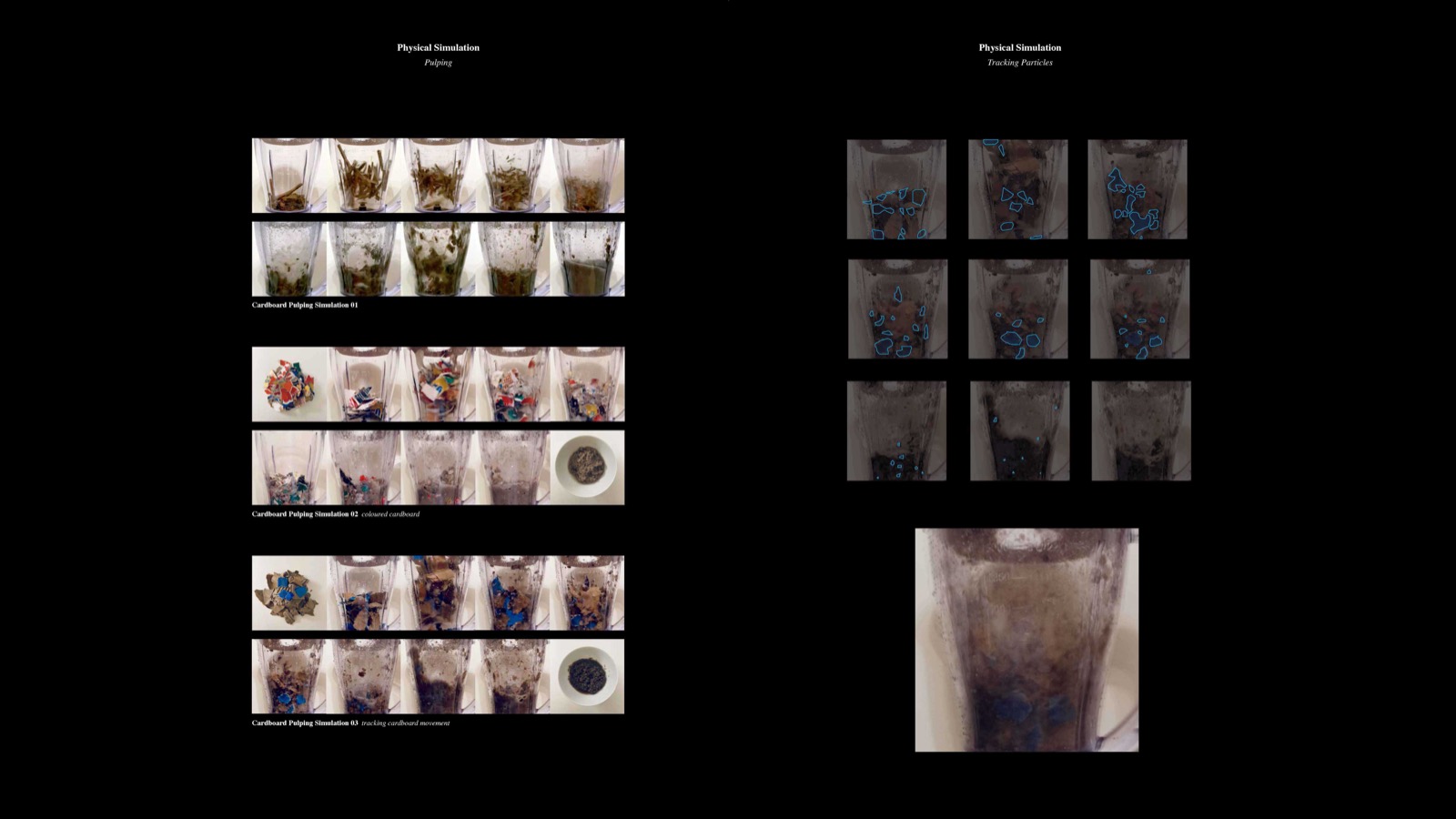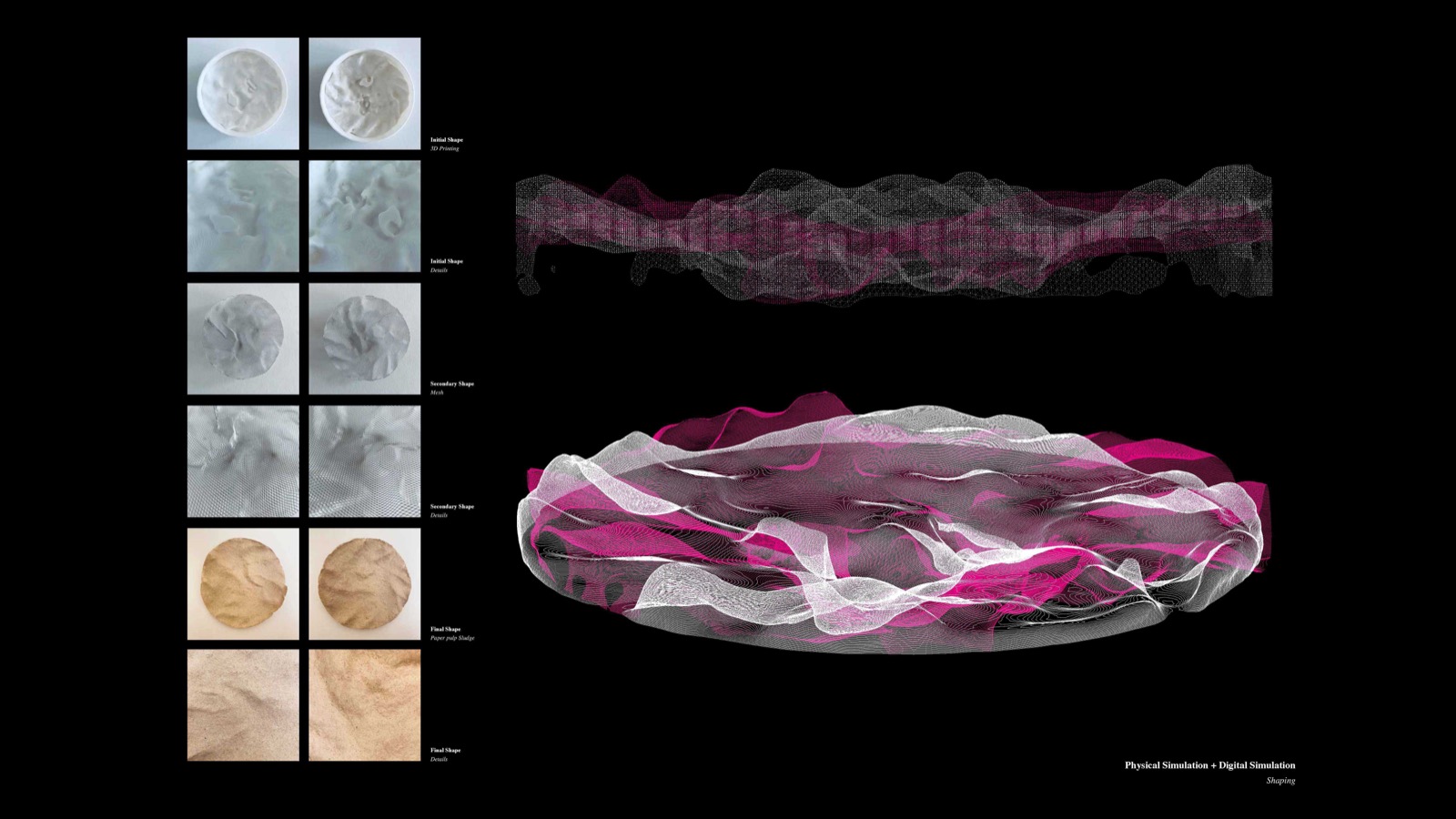Design Studio 18 ARCHIVE
Tutors: John Cook, Ben Pollock + Laura Nica
Air, Architecture + Other Climates
[50.0 degrees to 61.0 degrees N : Carbon Transitions]
Overview
Last year DS18 commenced its investigations into the topic of air and its role as the vehicle of energies, moistures and toxins within the High North, whilst exploring ways that architecture could shape, be shaped by, or integrate within this invisible globally circulating matter. This year we continue this exploration, narrowing our focus to one of airs more negligible but most critical ingredients – both the ‘building block of life’ and measure of our climatic decline; carbon.
Carbon is a transformative substance of both its own state and the societies enabled around it. As an energy resource it has fundamentally driven humankind’s development, restructuring social orders and led to the current hierarchy of global power. Beyond this, its energy capacity and the logistical possibilities it enables, has distributed and shaped the spatial configurations and fabric of our built environment, whilst catalysing the reciprocal energy consuming cycles it is rooted in. It is posed we now live in the paradigm of Carbon Form (1). As an air based bi-product, released oxidised carbon (CO2) continues to destabilise earth’s atmospheric composition, raising global temperatures and drastically interfering with our climate and weather systems. And in more recent times, carbon takes on another guise, as the rights to burn or even the absence of carbon is commodified and traded as credits upon the environmental marketplace. We will consider carbon as this transformative entity, tracking its pathways and transitions between states, material type, energy and values – but also as a spatial organiser, a cultural driver, and political/economic agent.
Context
The site for our investigations this year will return to the UK at a critical juncture, as this island nation prepares to independently form and govern its own directives, to shape its economic, social and environmental future. As pressures to revive the post-Covid economy and secure future trade relations rely on the values of industrial advancement and commercial growth, what approach does this take in our time of climatic and ecological degradation? Industrial growth strategies paired with environmental recovery plans reinforce the troublesome contradictions between concerns of economy and climate – increasingly centred around the ambiguous rhetoric of ‘Clean Growth, ‘Green Futures’, and ‘De-Carbonisation’(2). Now carbon, our carbon society, and the carbon based practises that generated and feed it, is asked to further transition and disassemble.
With carbon form and practices so embedded and generative of our built environment and behaviour, what does de-carbonisation mean in this context, and what scales of change does this call for? You will be asked to take a critical stance – should this constitute a simple transferral of means to maintain the status quo of our energy society, or a more radical re-imagining of our way of living? Through this, what opportunities emerge for new societal frameworks, industrial practices, rural/urban configurations, landscape/architectural typologies, based upon new relationships to energy origins, access, and usage?
Process
We will commence the year through research, exploring industries, infrastructures and typologies, directed by a specific carbon catalytic entity. Guided by a series of digital and technical workshops, we will use carbon as a lens to trace these objects materially, to follow their cycles, flows and offshoots across geologic timescales – through data, experimental cartographies and new drawing constructs. We will examine these subjects as drivers of spatial and logistical formation, as well as the sociopolitical and economic networks they are enmeshed with. We will engage with carbon itself from the microscopic to the global, imagining its processes and transitions via physical material explorations and ranging experimental digital means.
In semester two, encapsulating these investigations and developed skill-sets, the students will independently formulate their major design thesis. Having traced carbons pathways across scale, state and form, the students will determine at what point to interject – whether to arrest, divert or transform, through proposals from the architectural, landscape to the global scale. The projects will examine and communicate these urgent climatic narratives, through experimental design processes and original representational techniques. As architects we invite radical speculations, to generate new dialogues amongst global energies and sociopolitical transitions, explored through ambitiously executed design proposals, at this critical moment in our twin climate and ecological emergency.
Ethos
Climate Change / Un-Sustainability
The context of our global climate and ecological emergency provides the foundation for all DS18 design research investigations. Alongside the sciences, we believe that the arts and architecture has a critical role in playing out and exploring future scenarios, testing the effects of changing environmental processes upon life and design, whilst using the project as a tool to communicate and represent these often intangible global threats to new audiences and in new ways.
Data / Computational Tools
We aim to ground projects through directed and appropriately rigorous levels of research. We gather and build datasets, employ cartographic methods and experimental diagrams to record, illustrate, and analyse these wide ranging conditions and complex relationships. We use computational design tools to process these, to simulate and explore them across ranging scales, and prepare or directly use their outputs to inform the design process.
Design / Representation
We encourage original design projects, multi-programme briefs exploring new typologies, appropriate to context and project scale, driven by the individual themselves. Our objective is to deliver these through new and creative forms of representation – to celebrate complexity and communicate the connections between the vast assemblage of project themes, relationships, scales, actors and material.
Website: www.designstudio18.com
Instagram: @ds18_westminster










